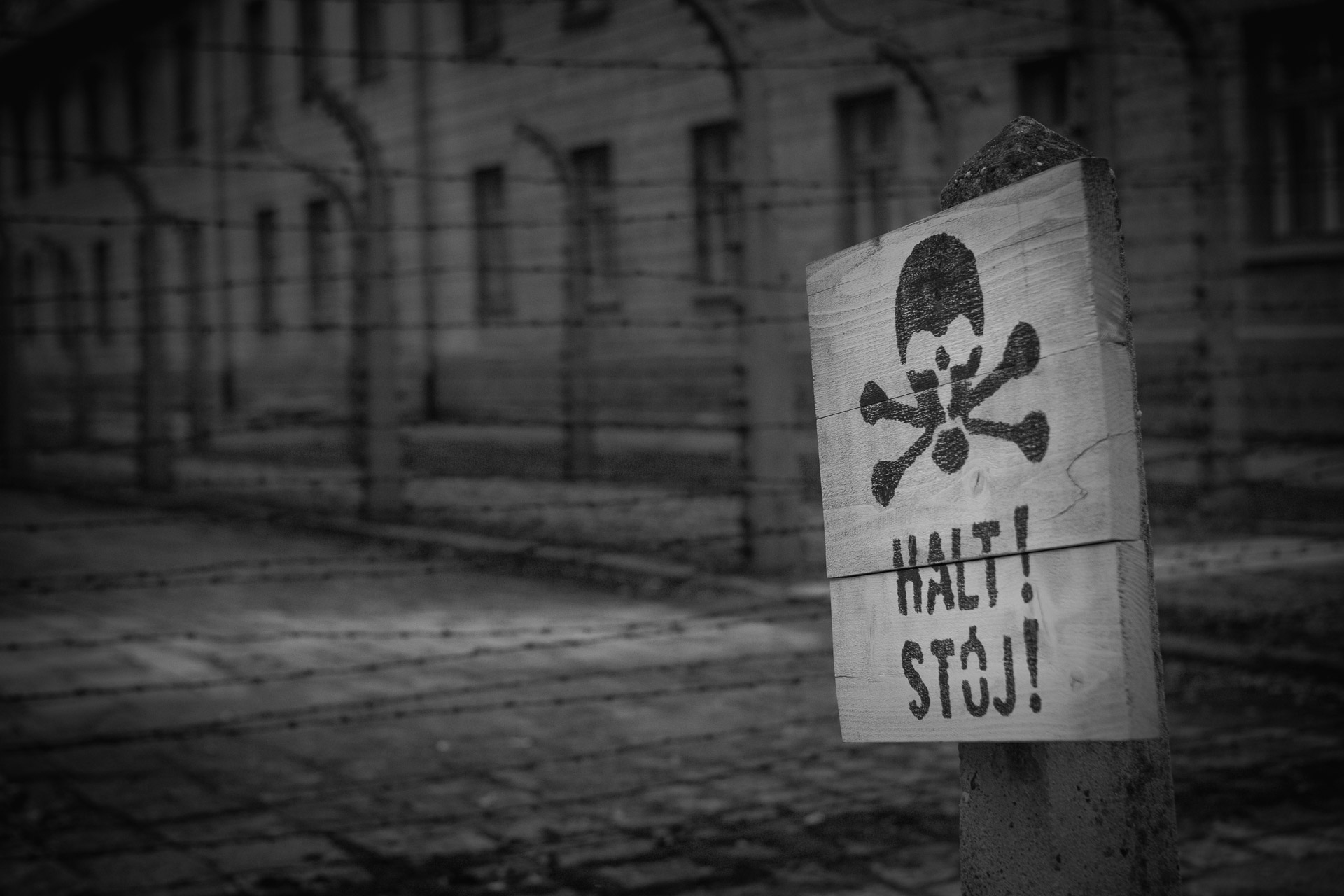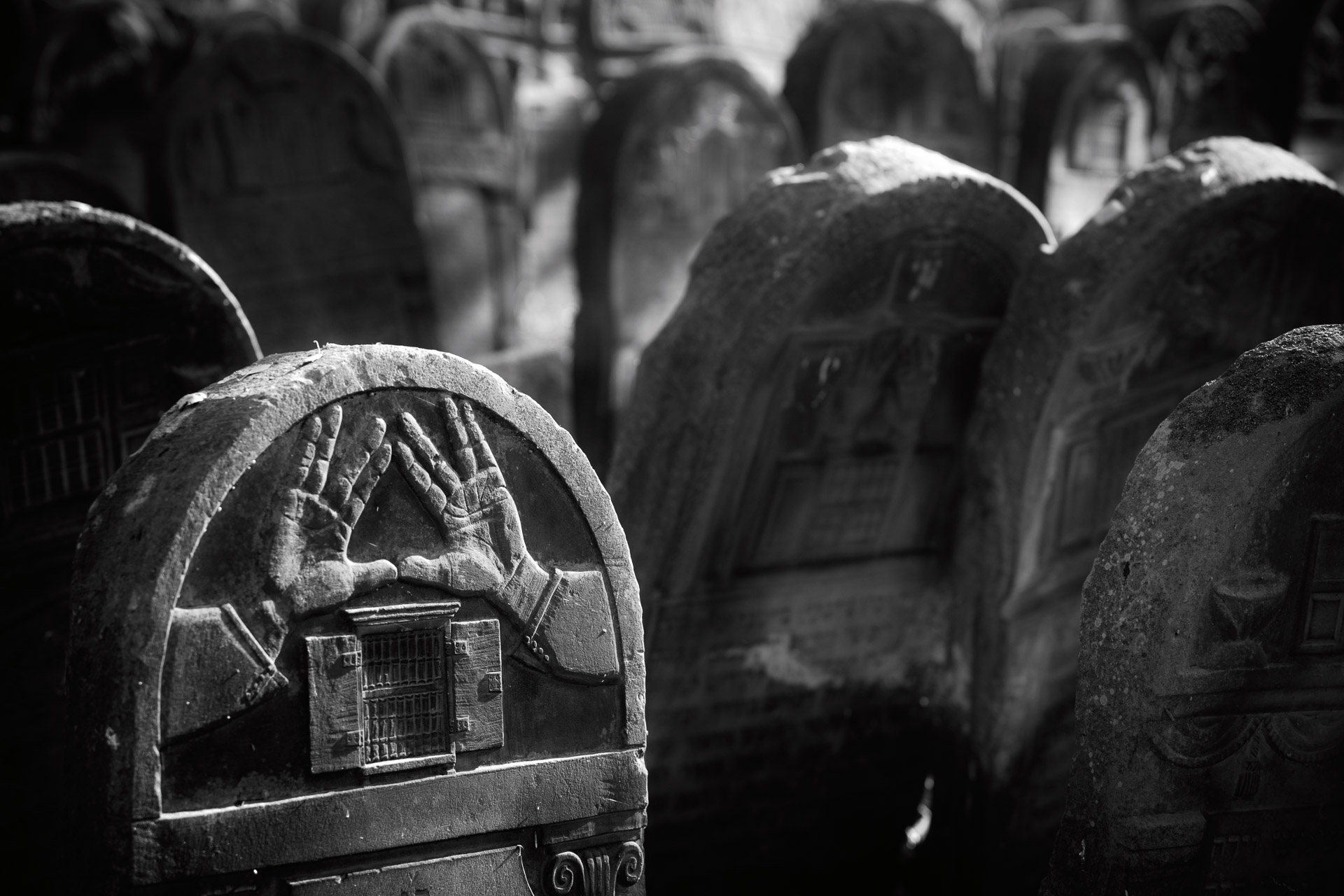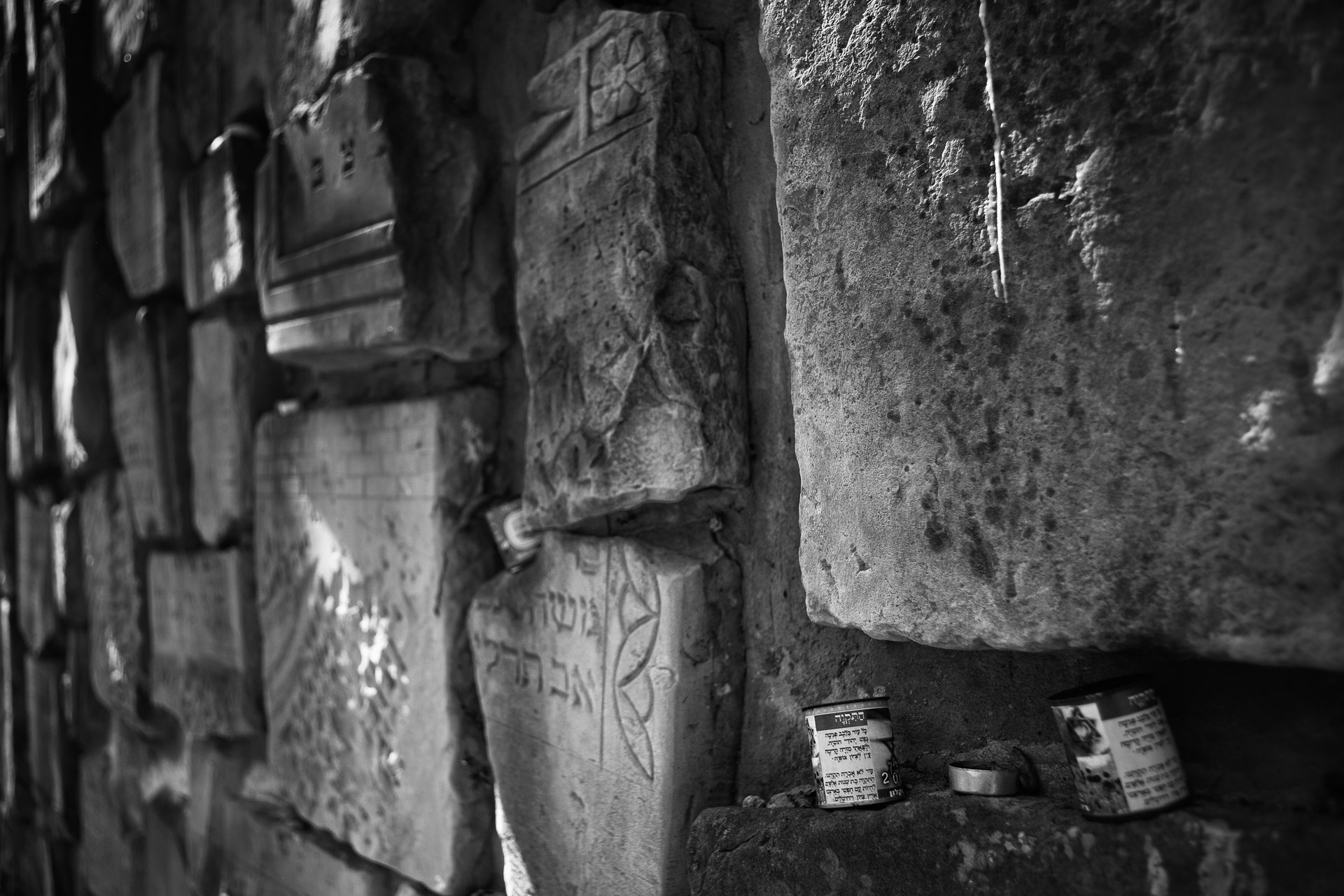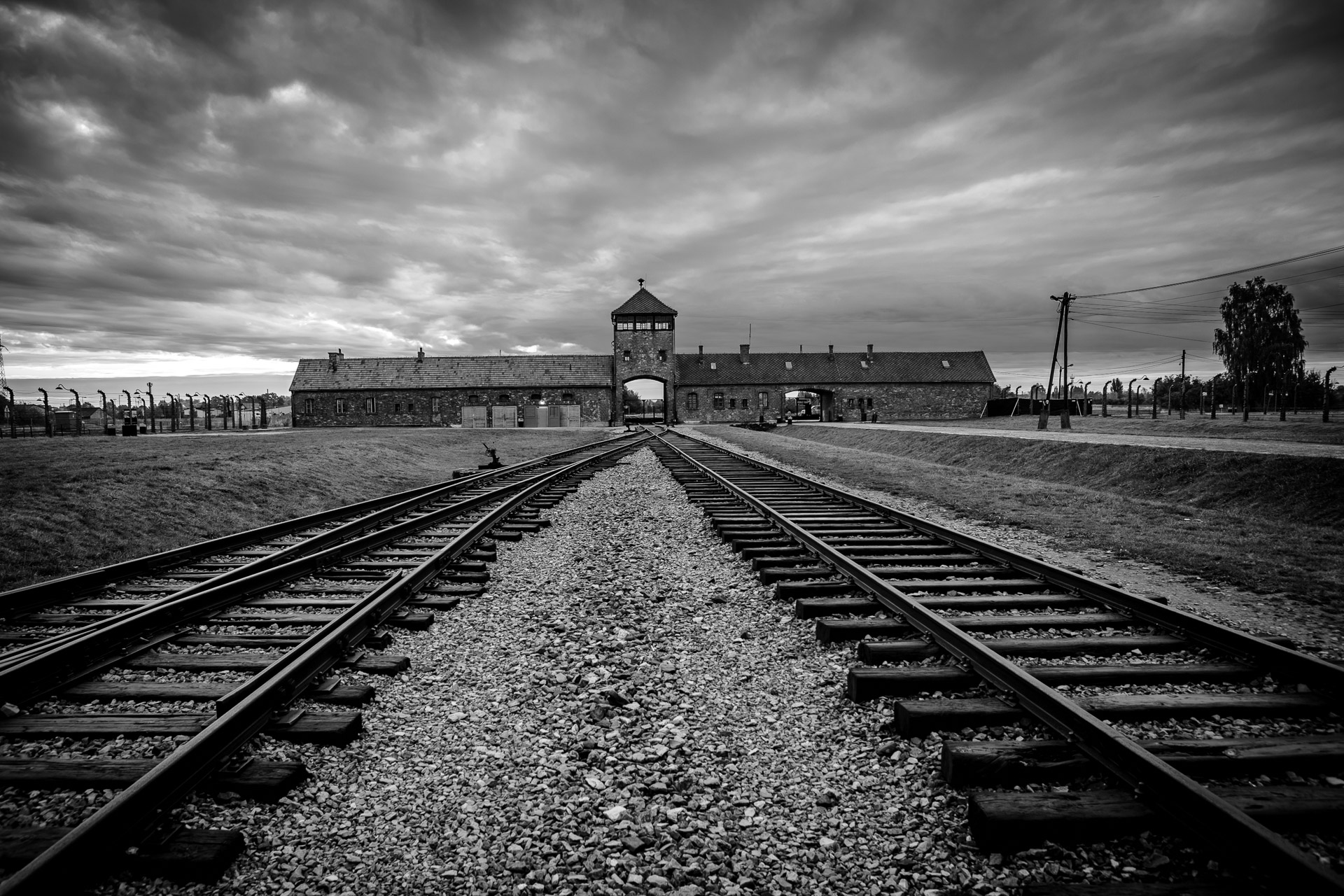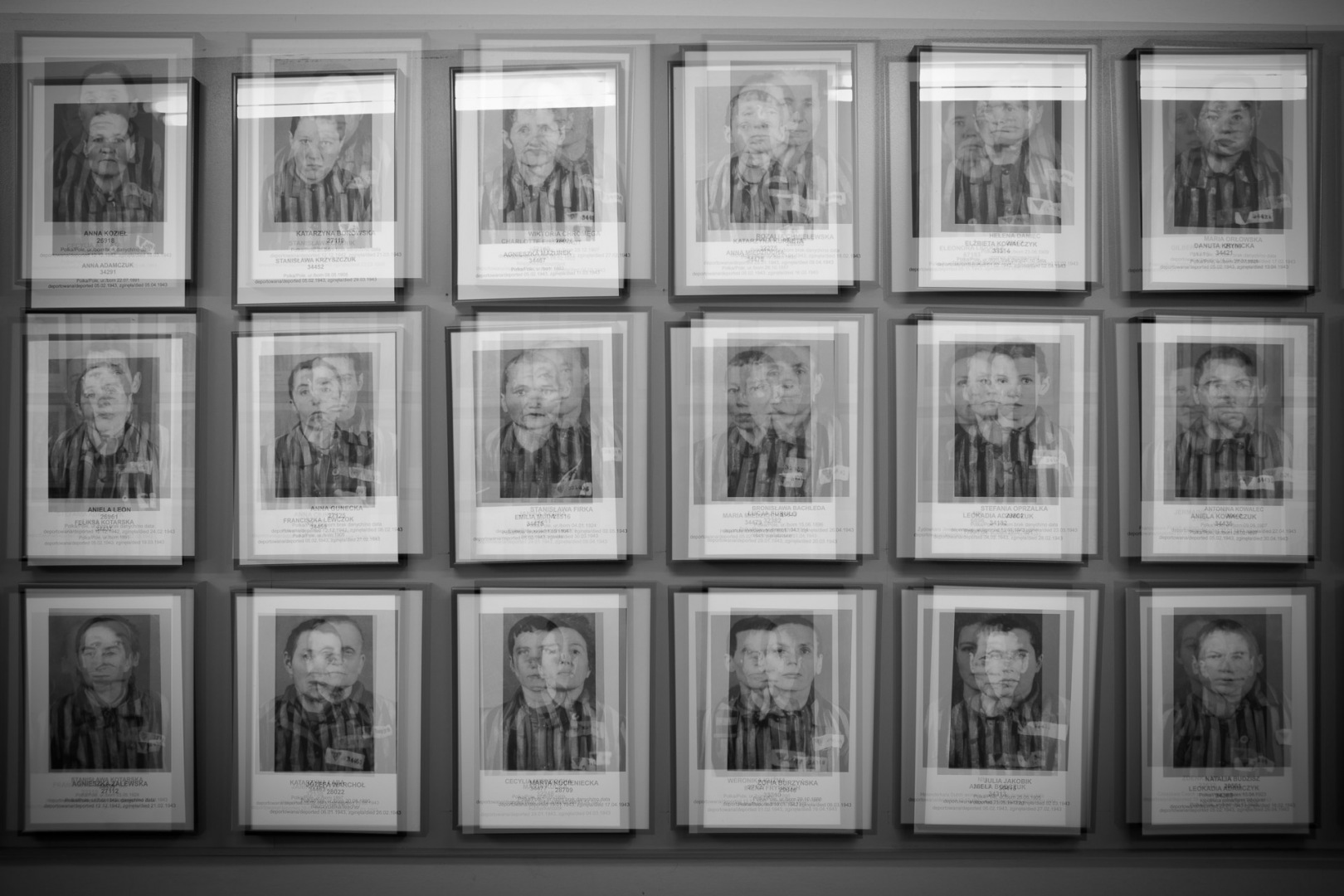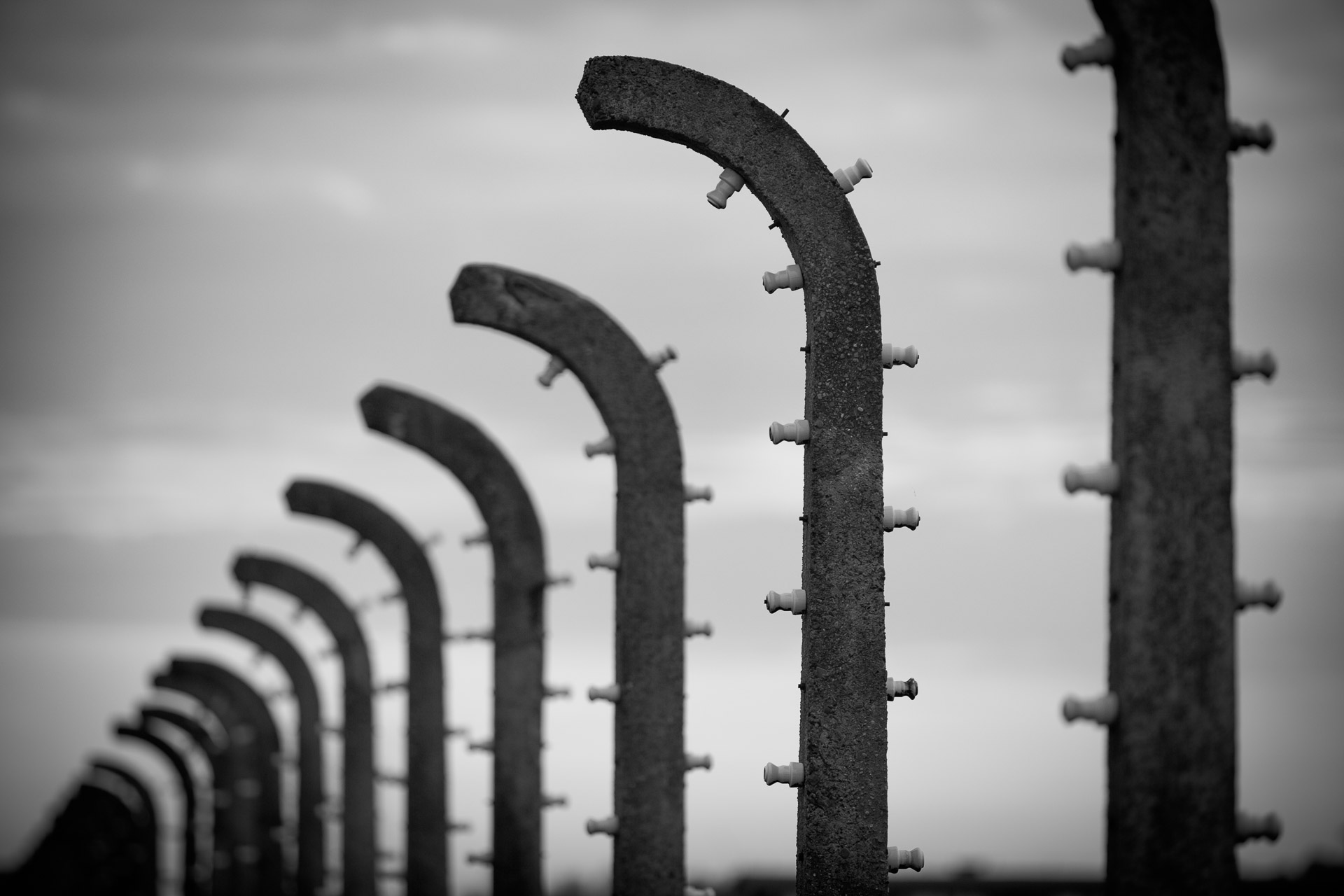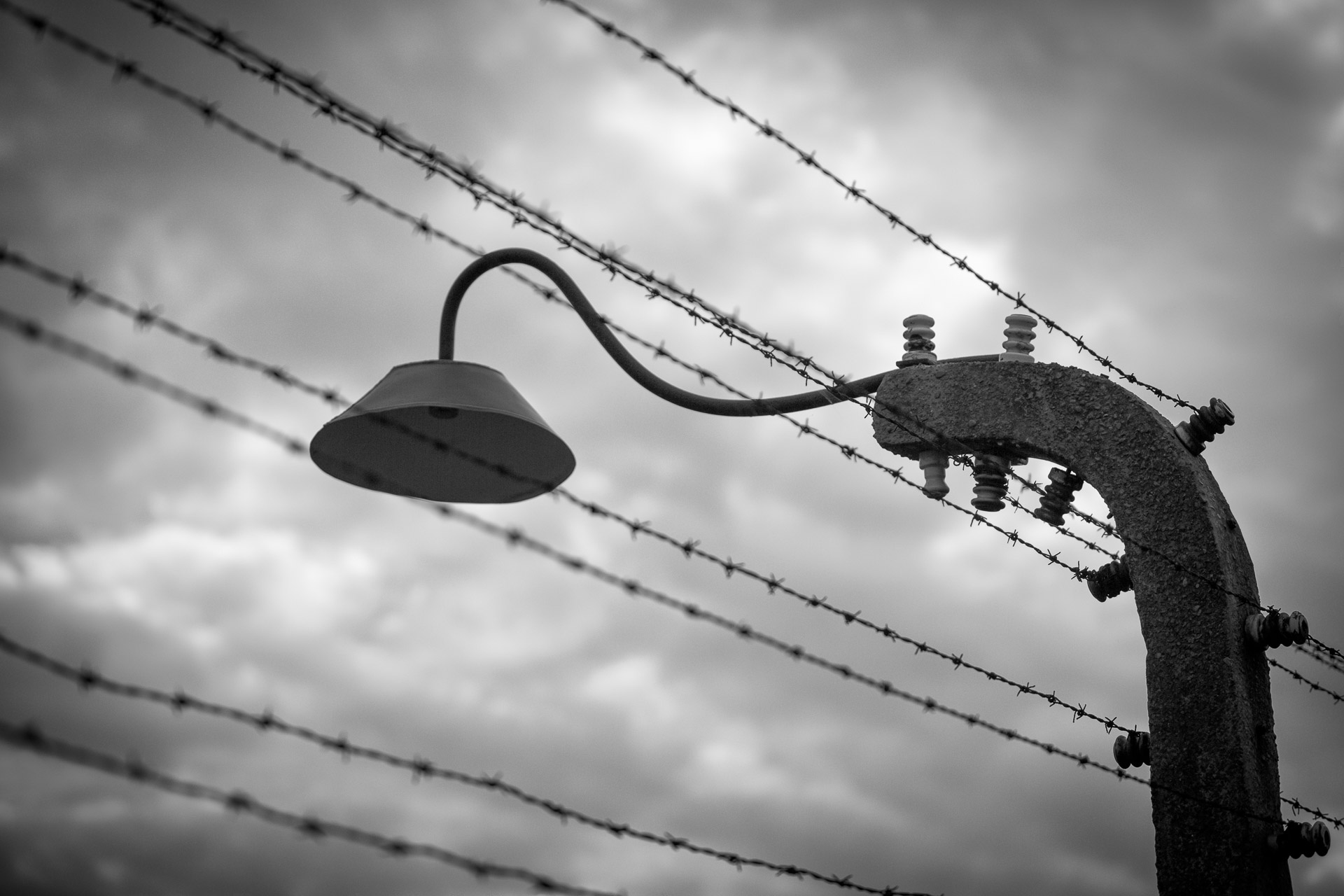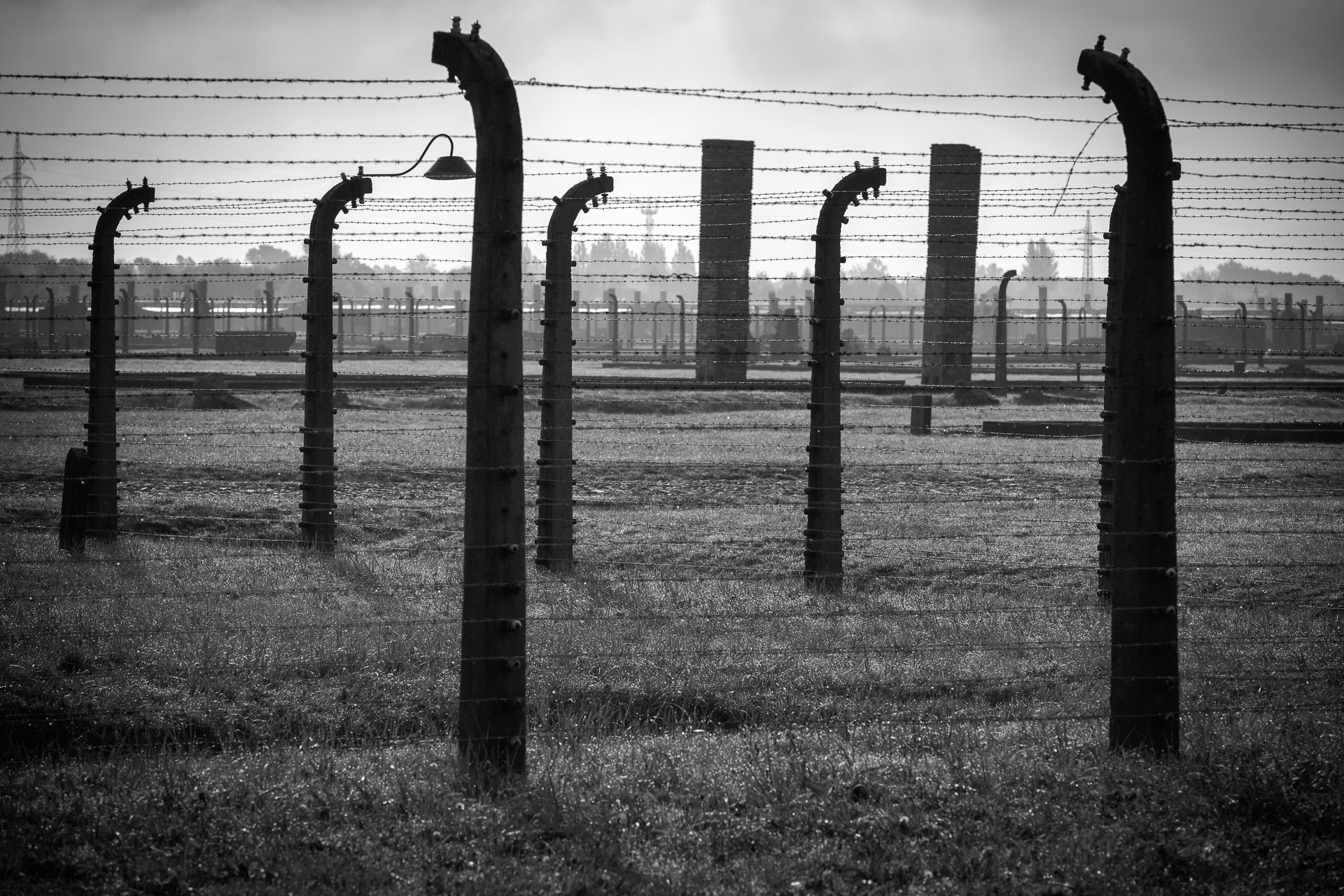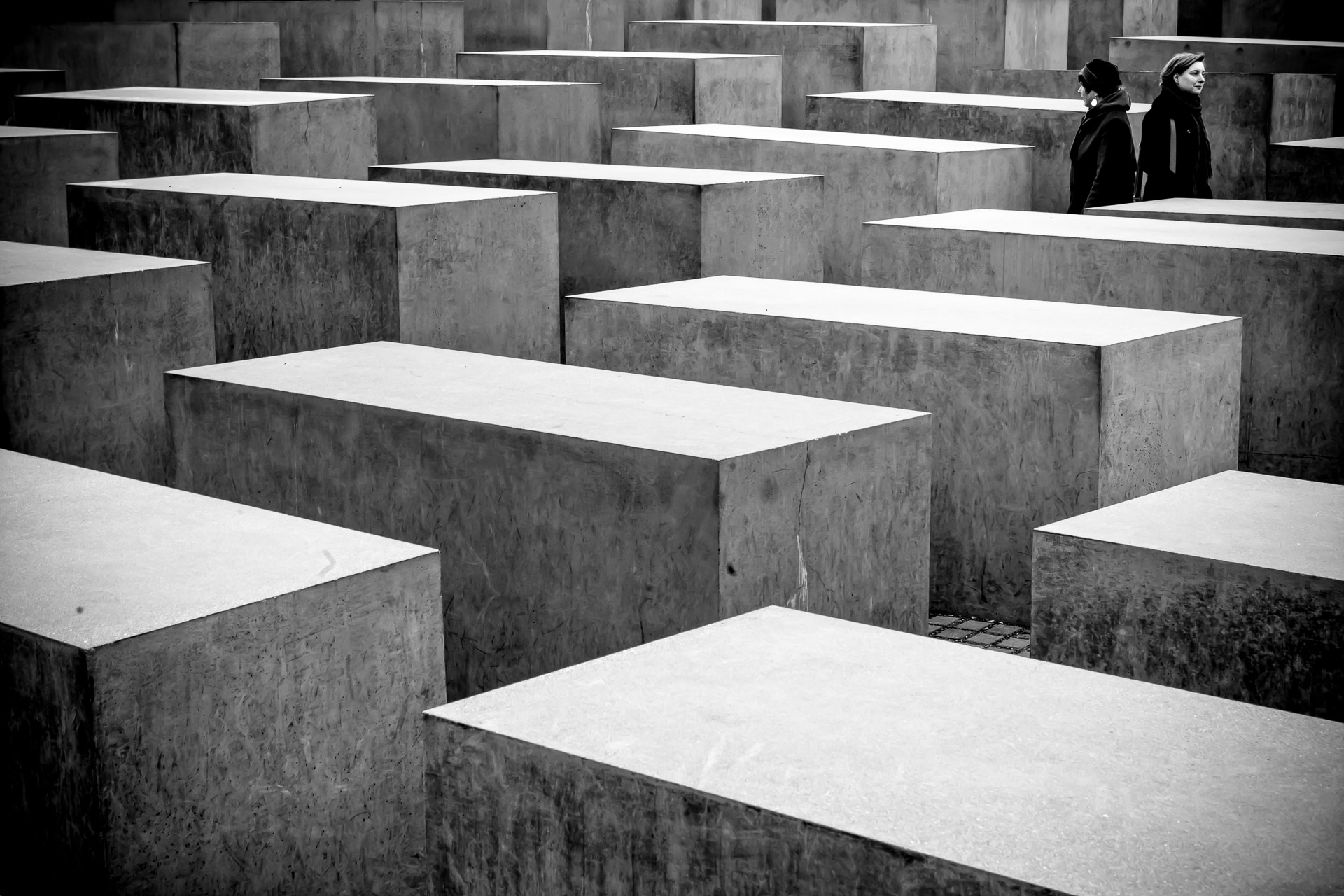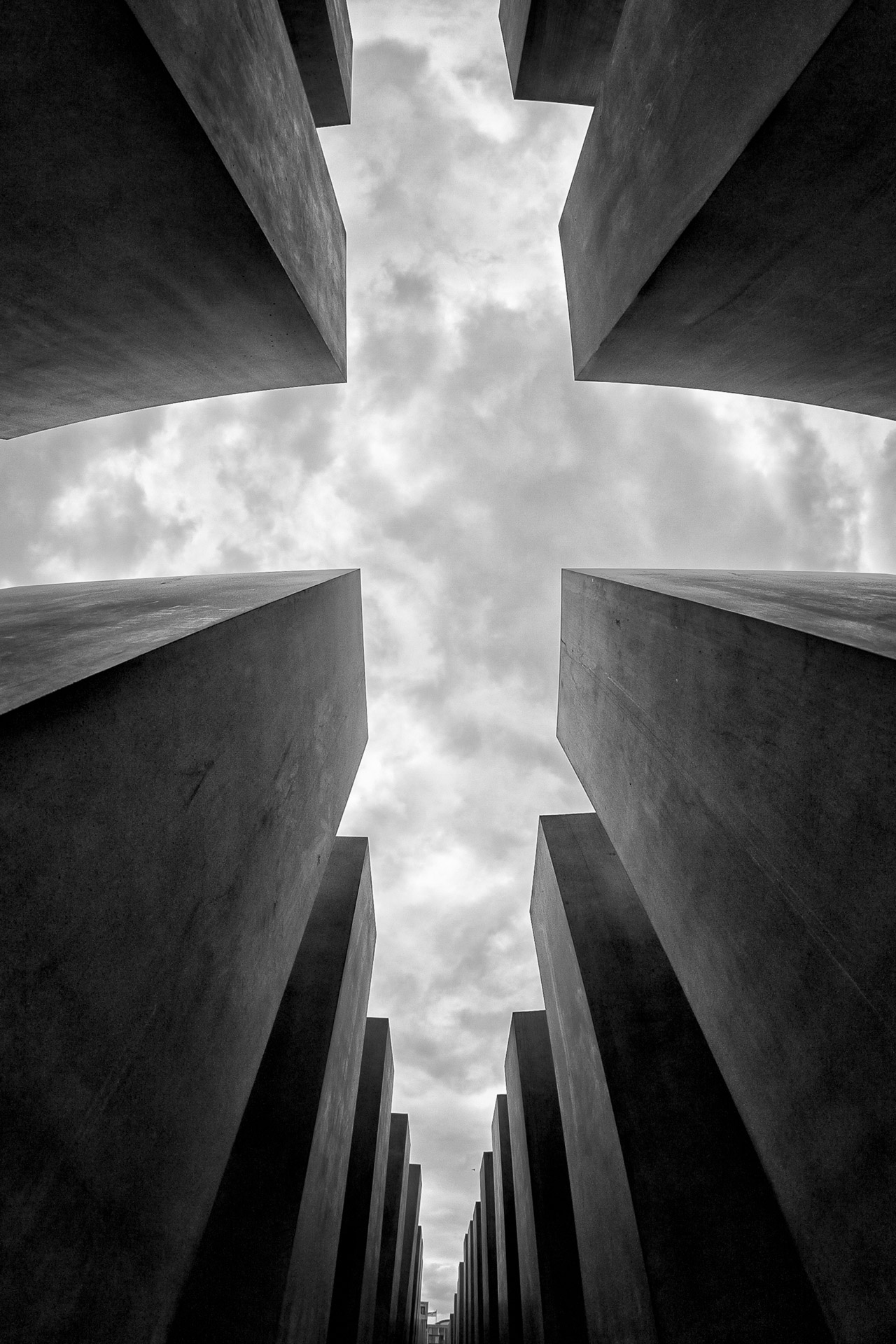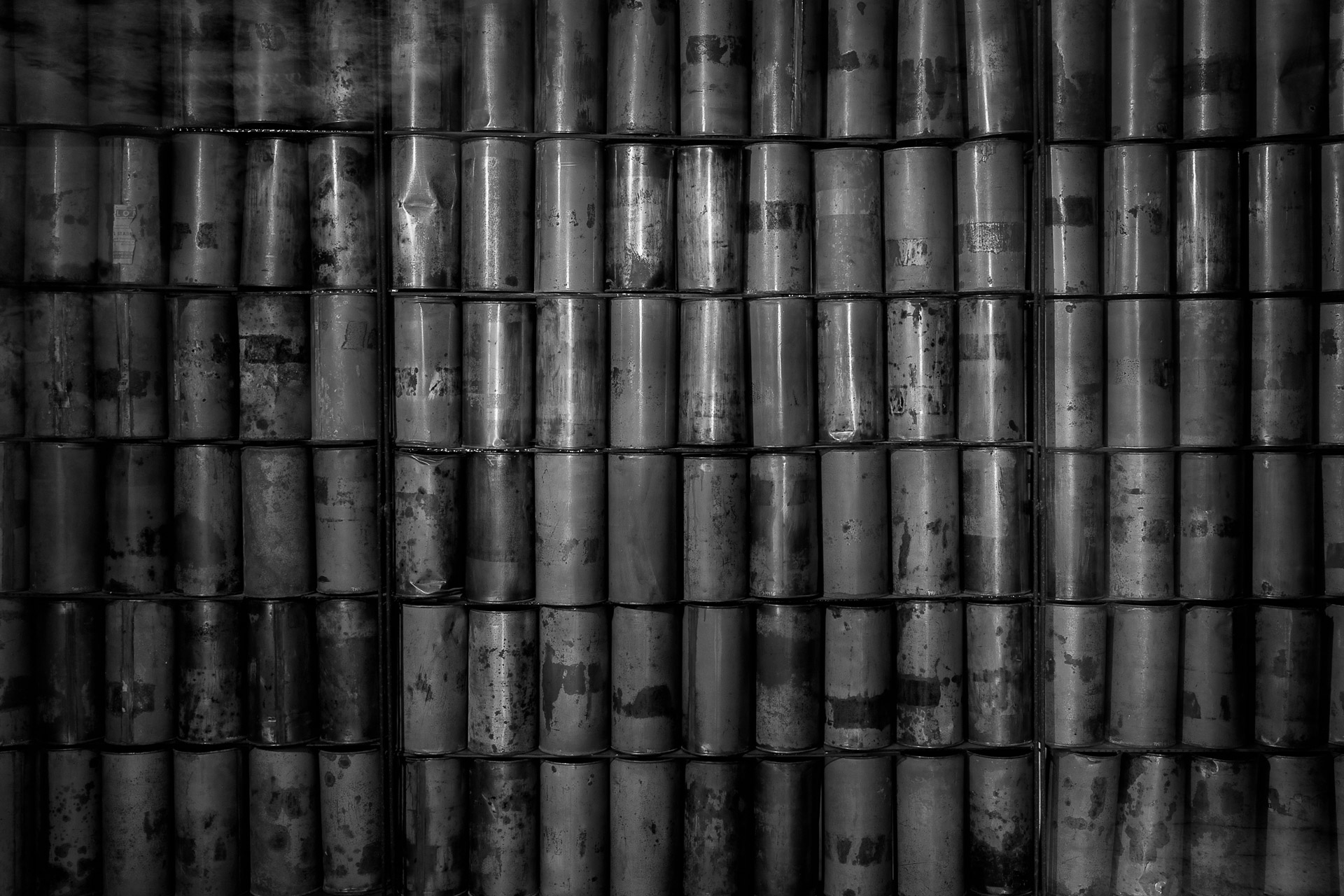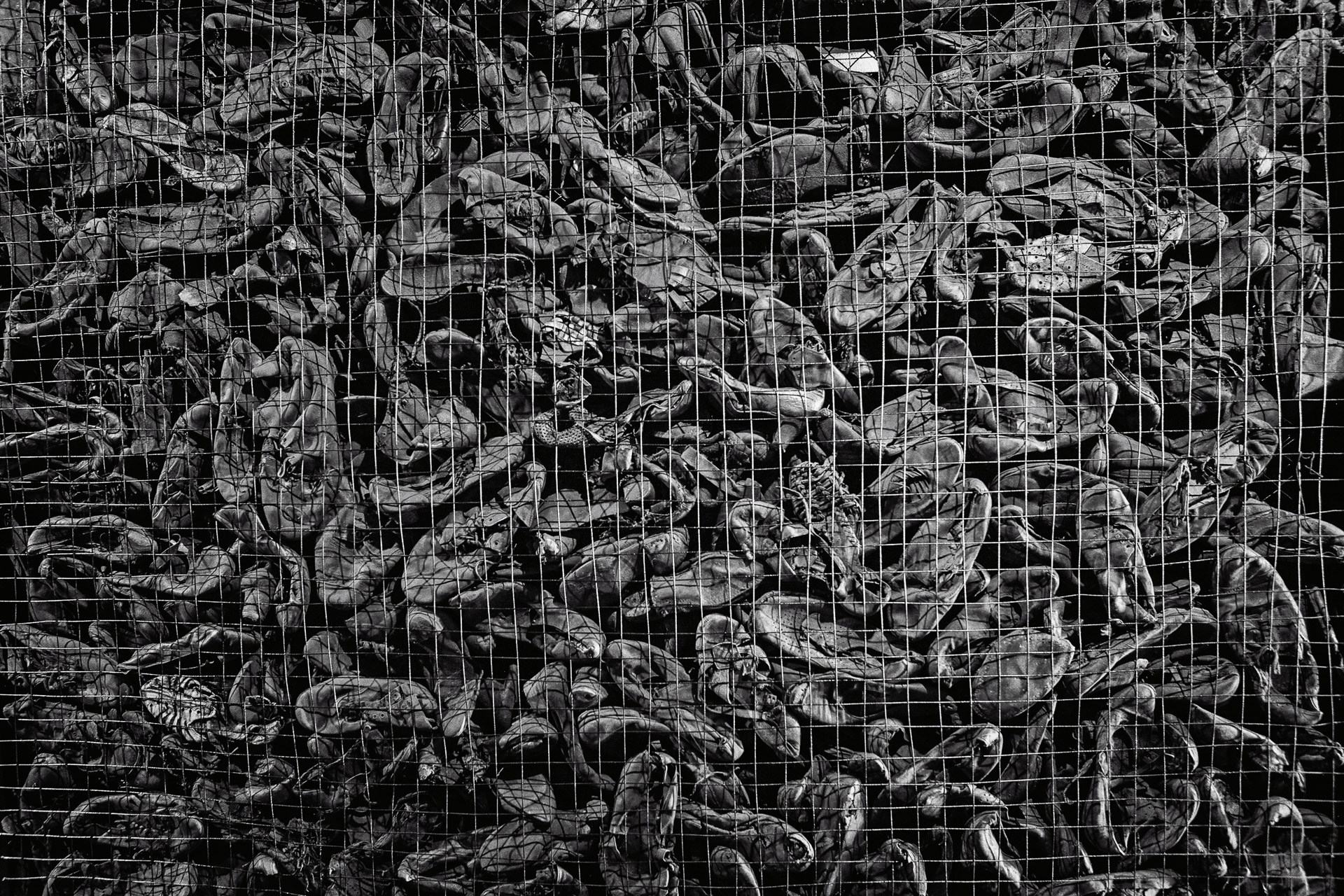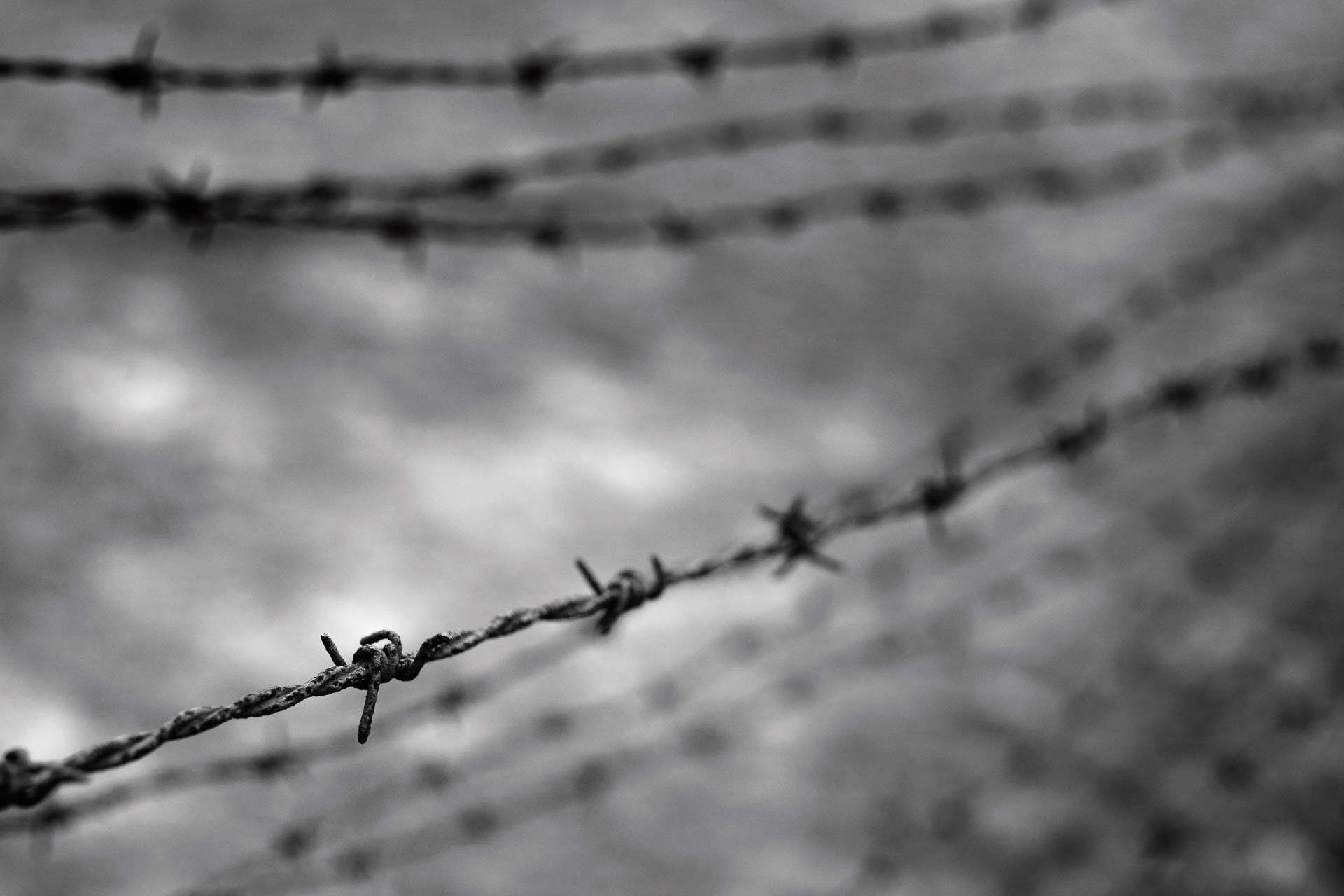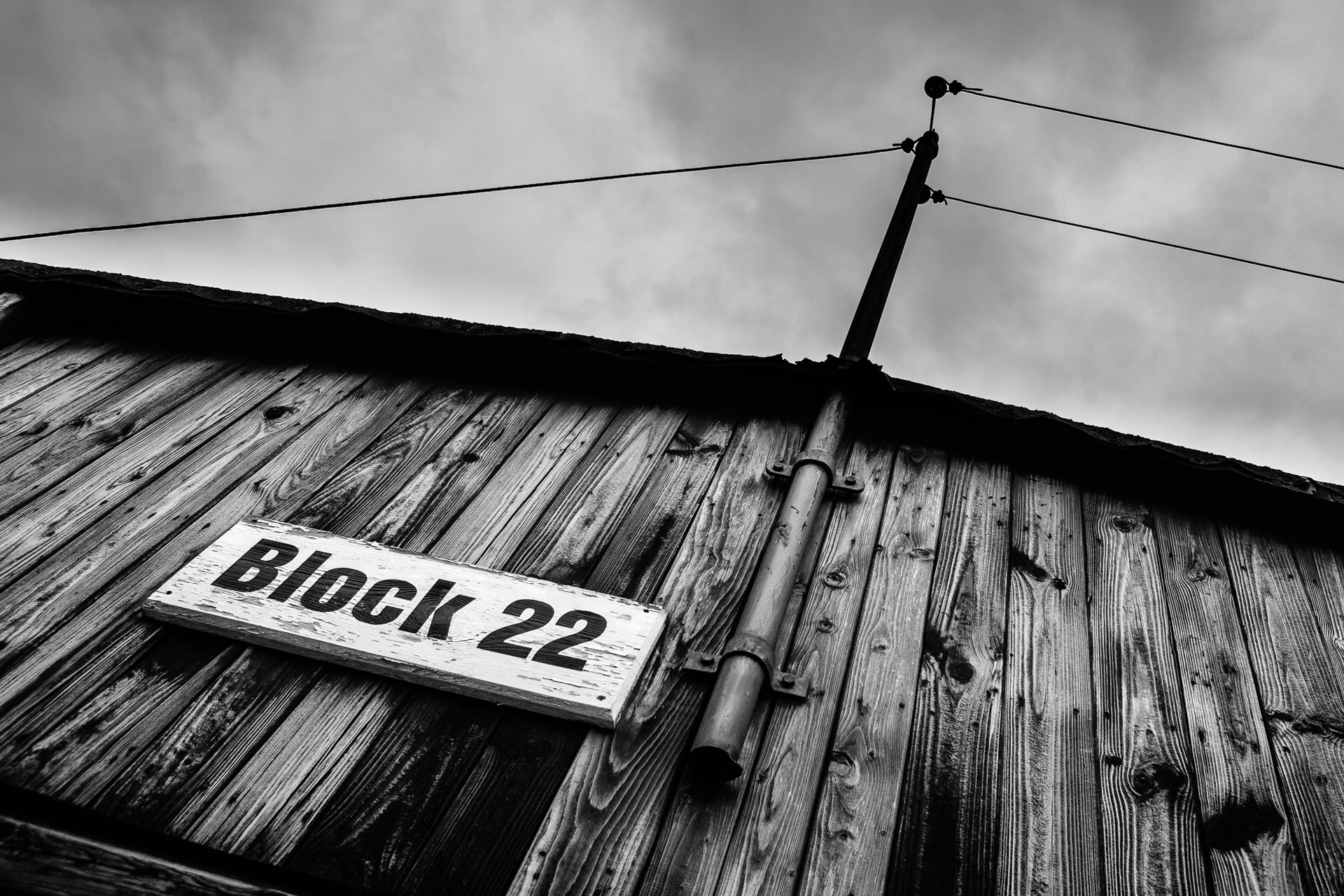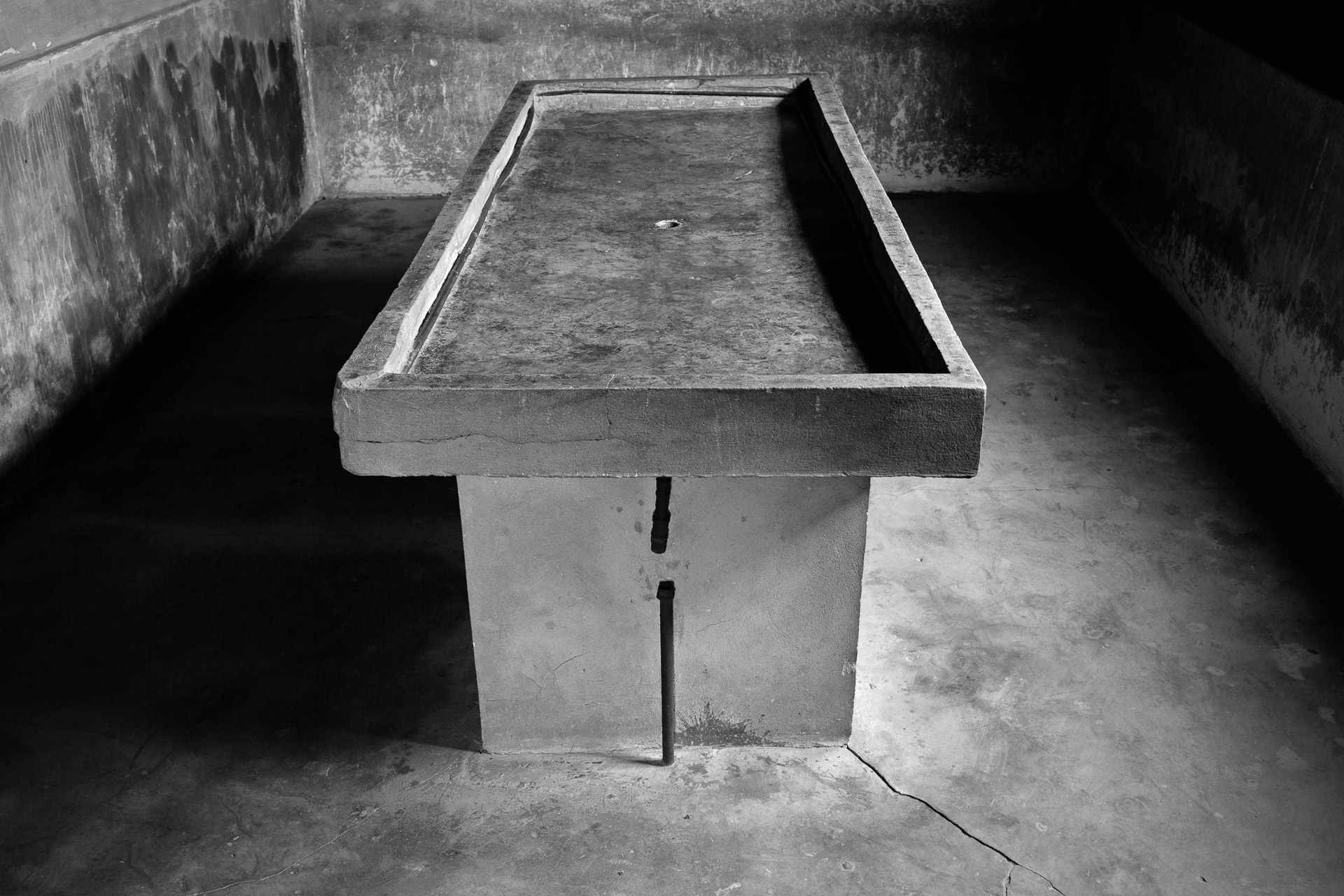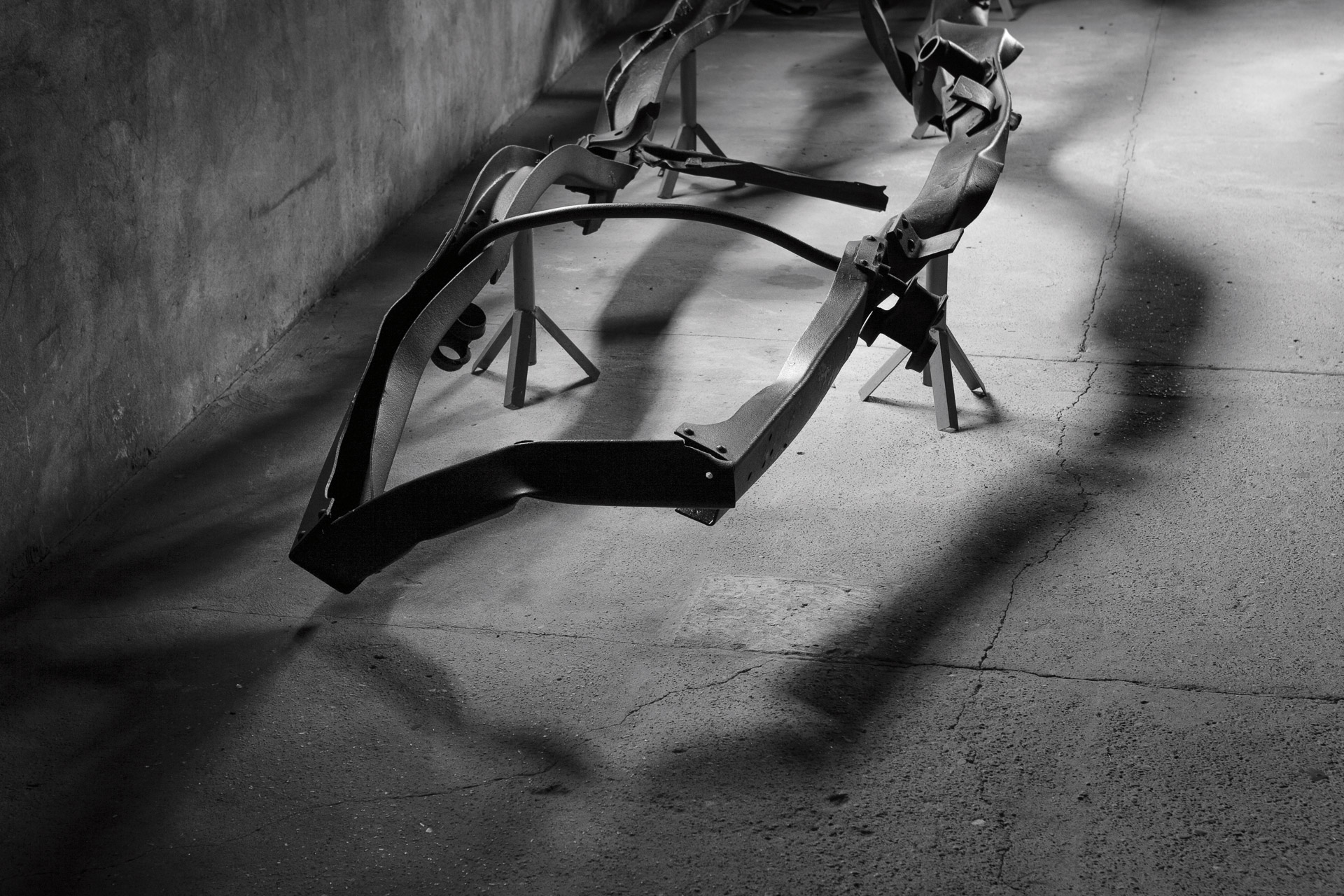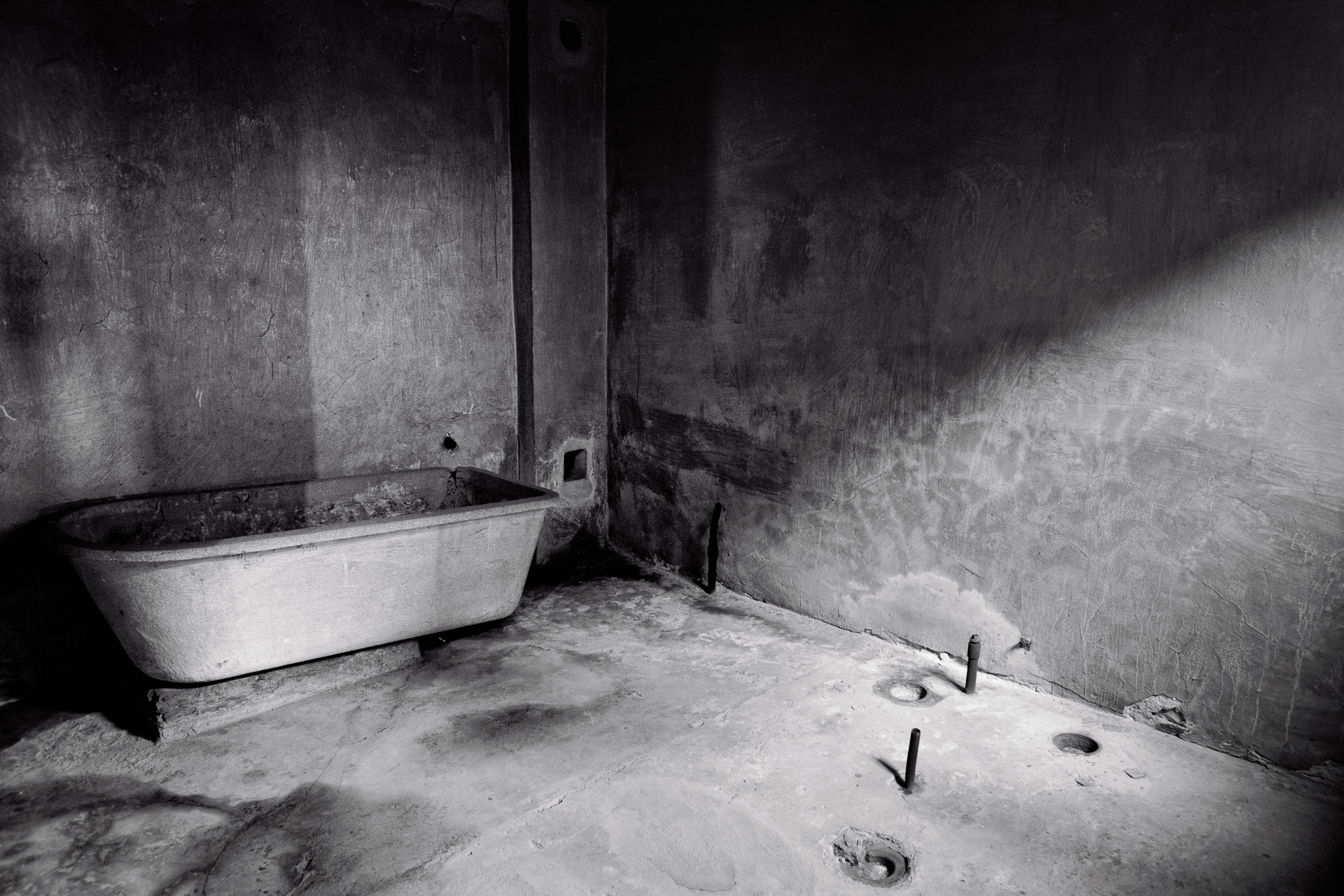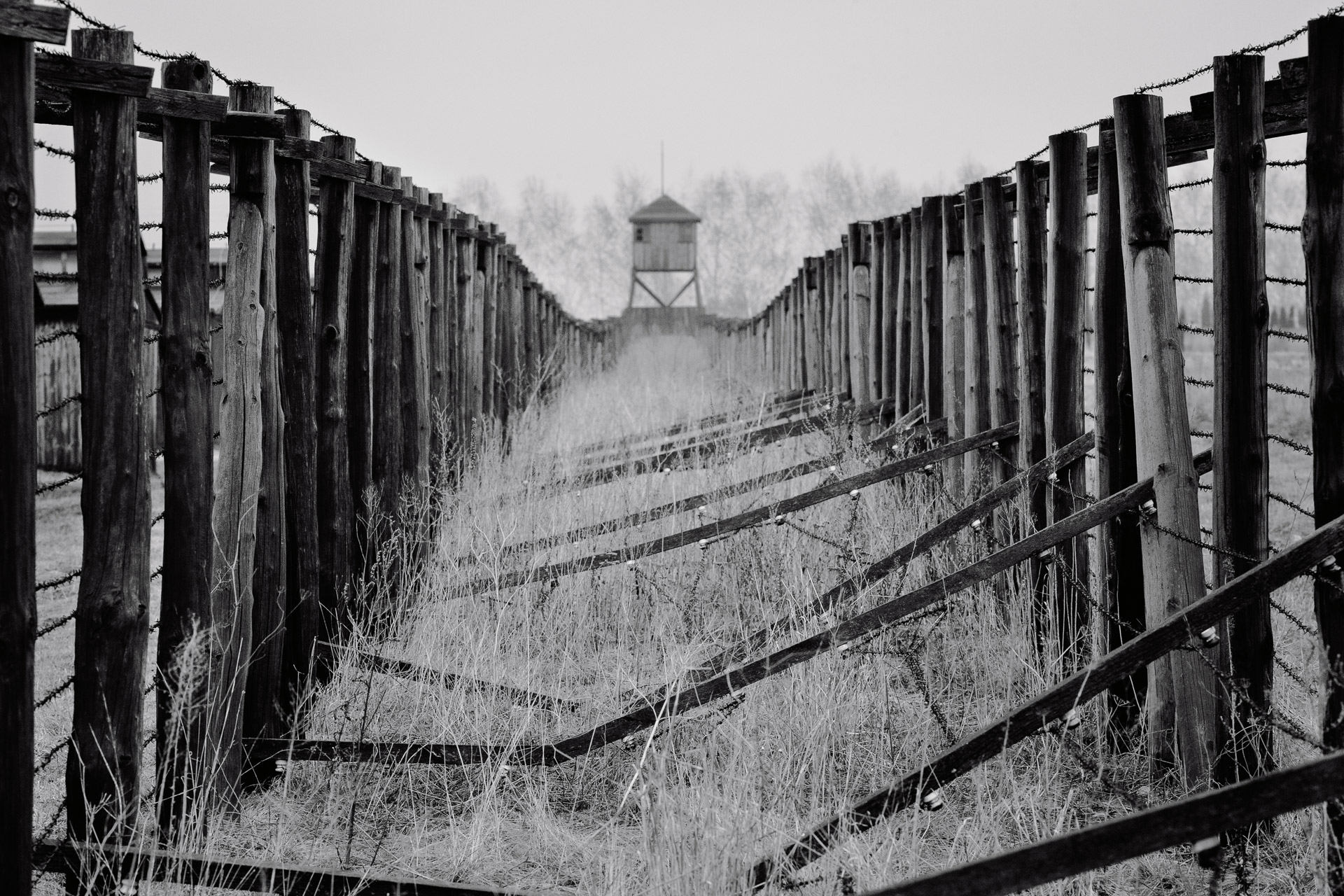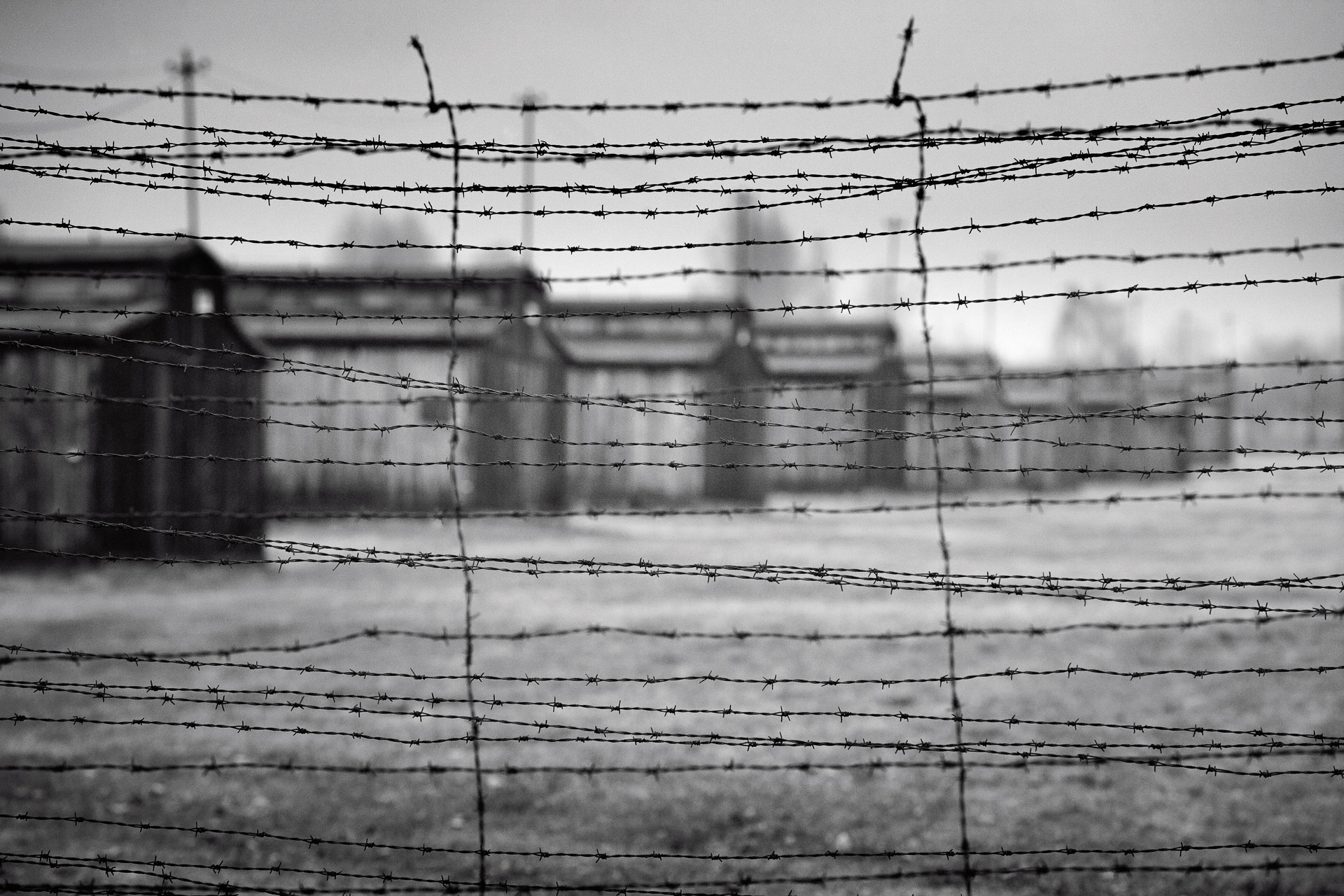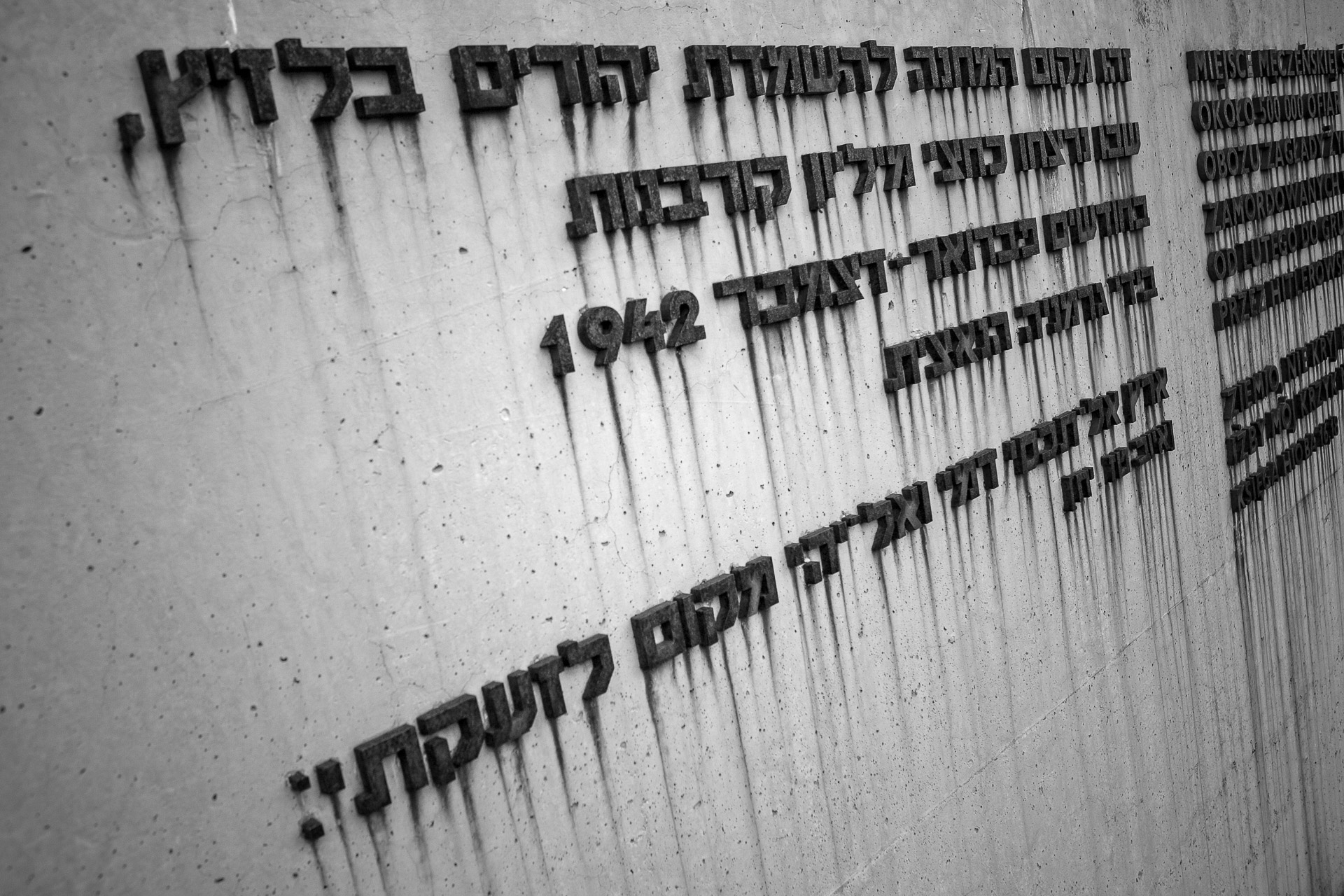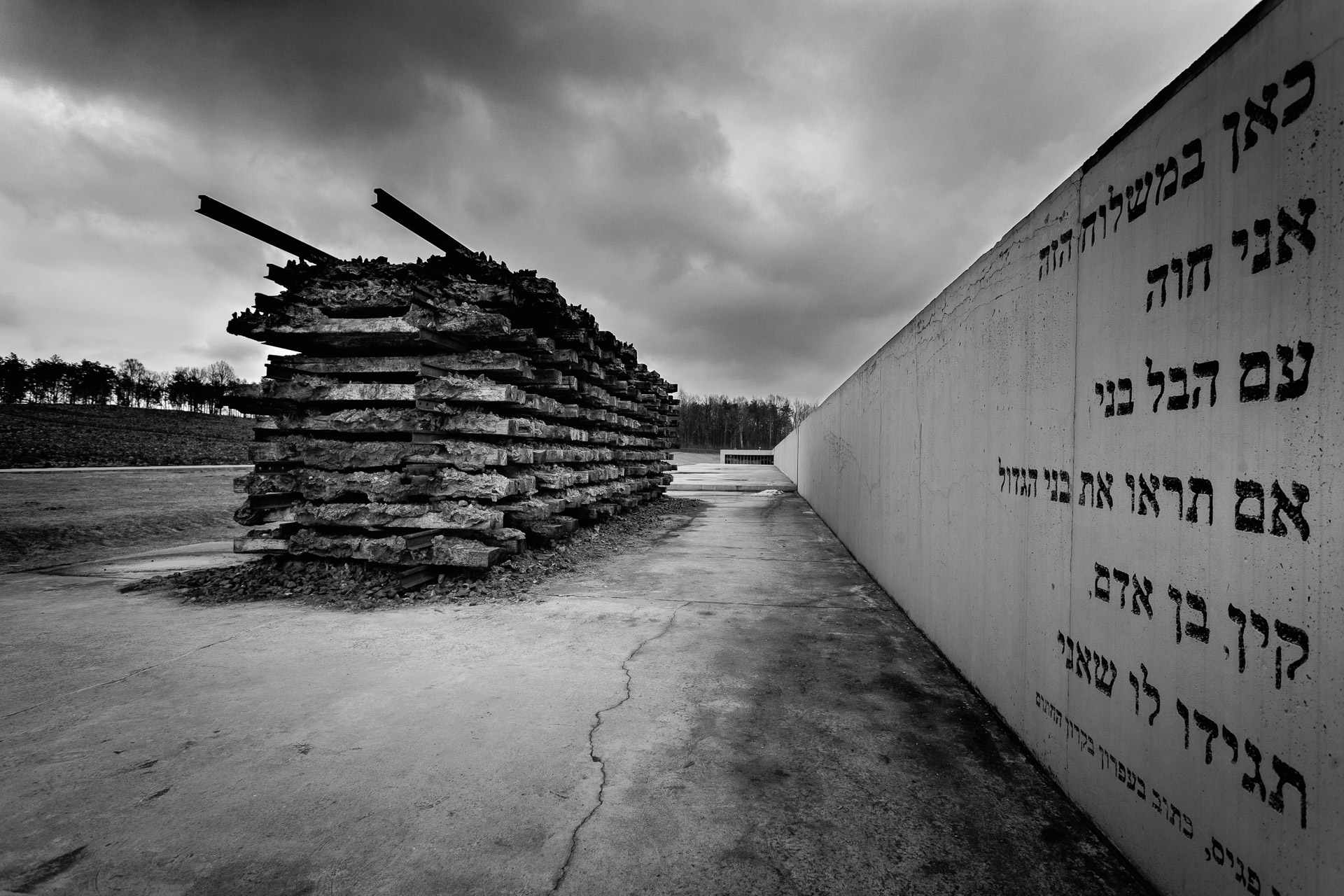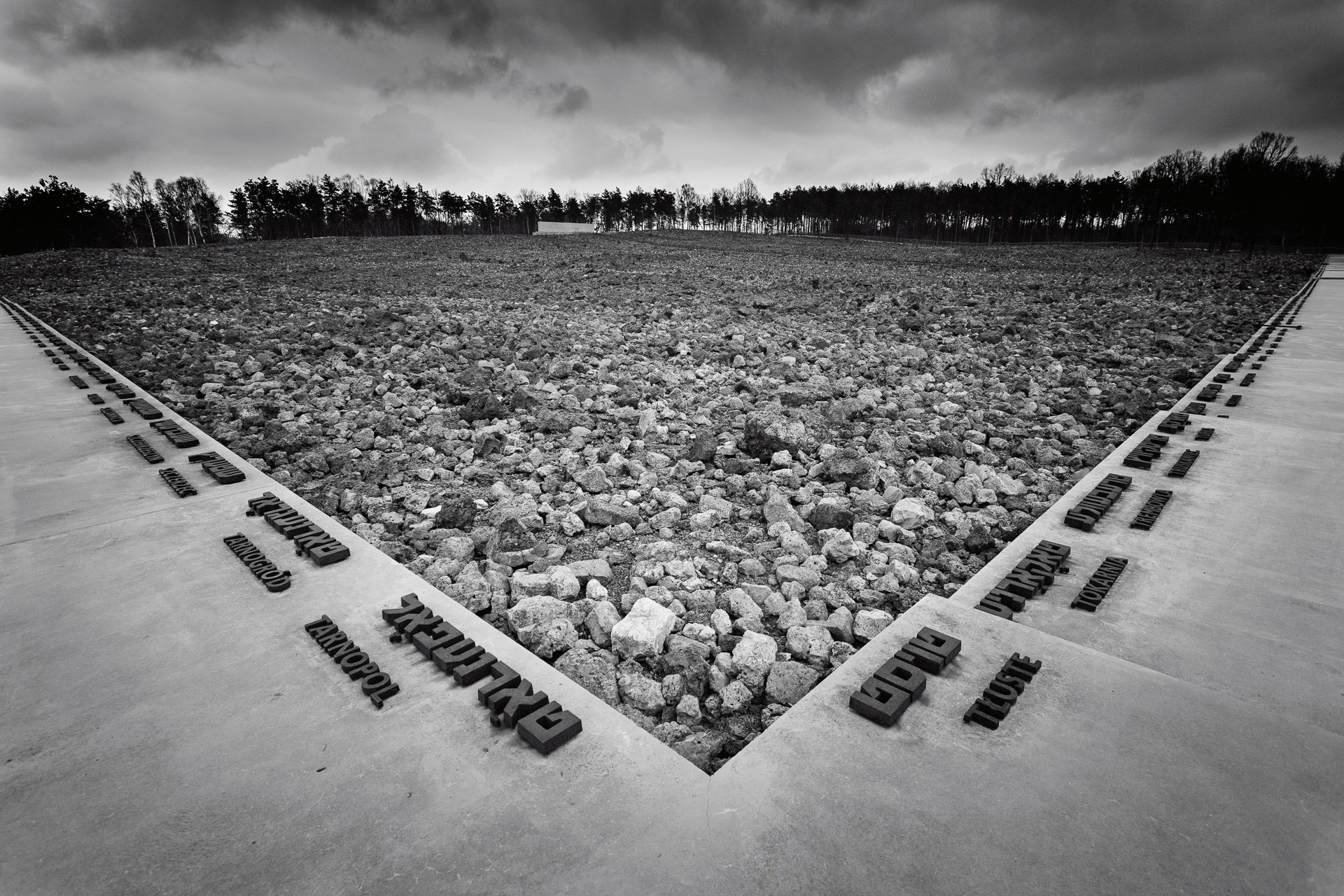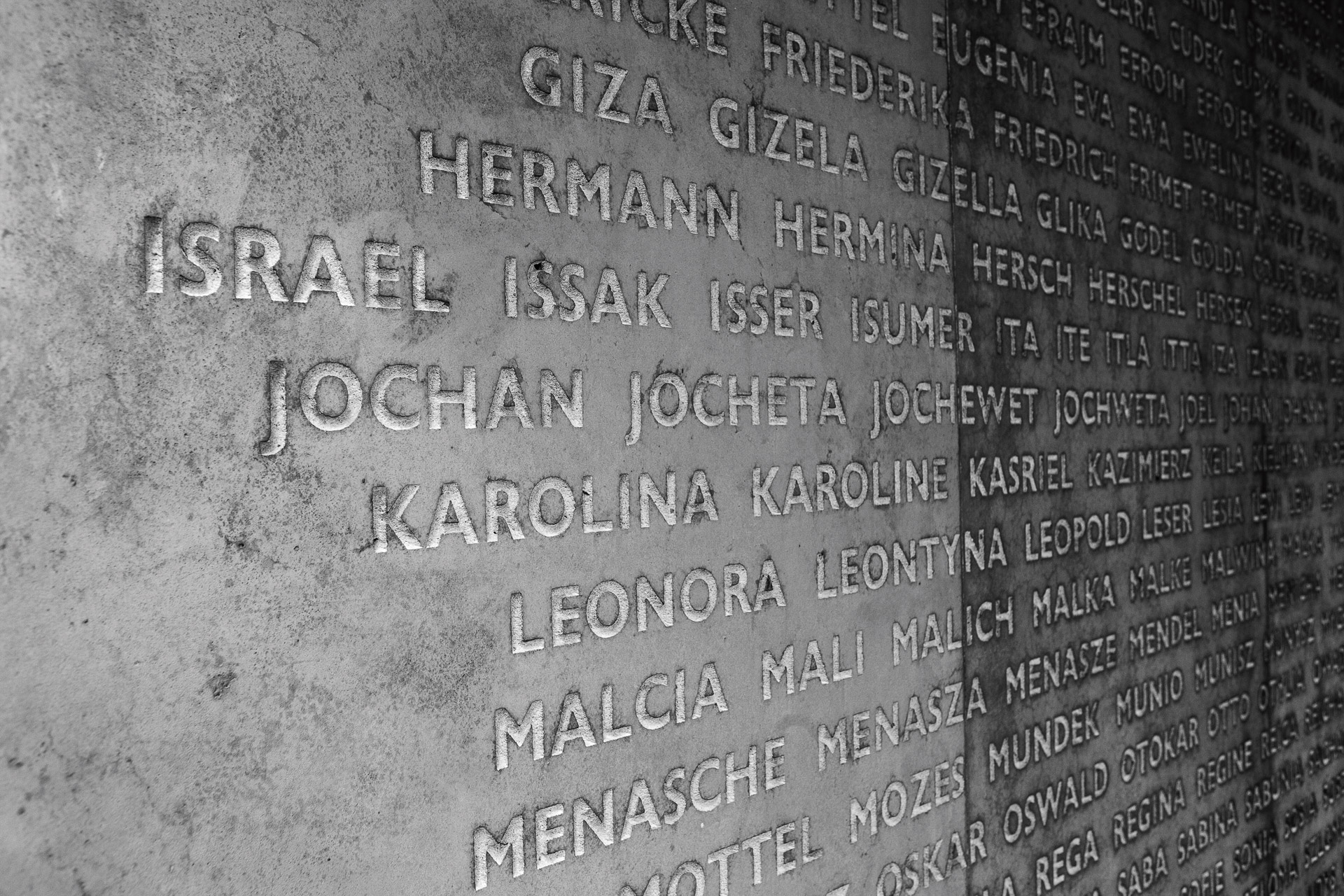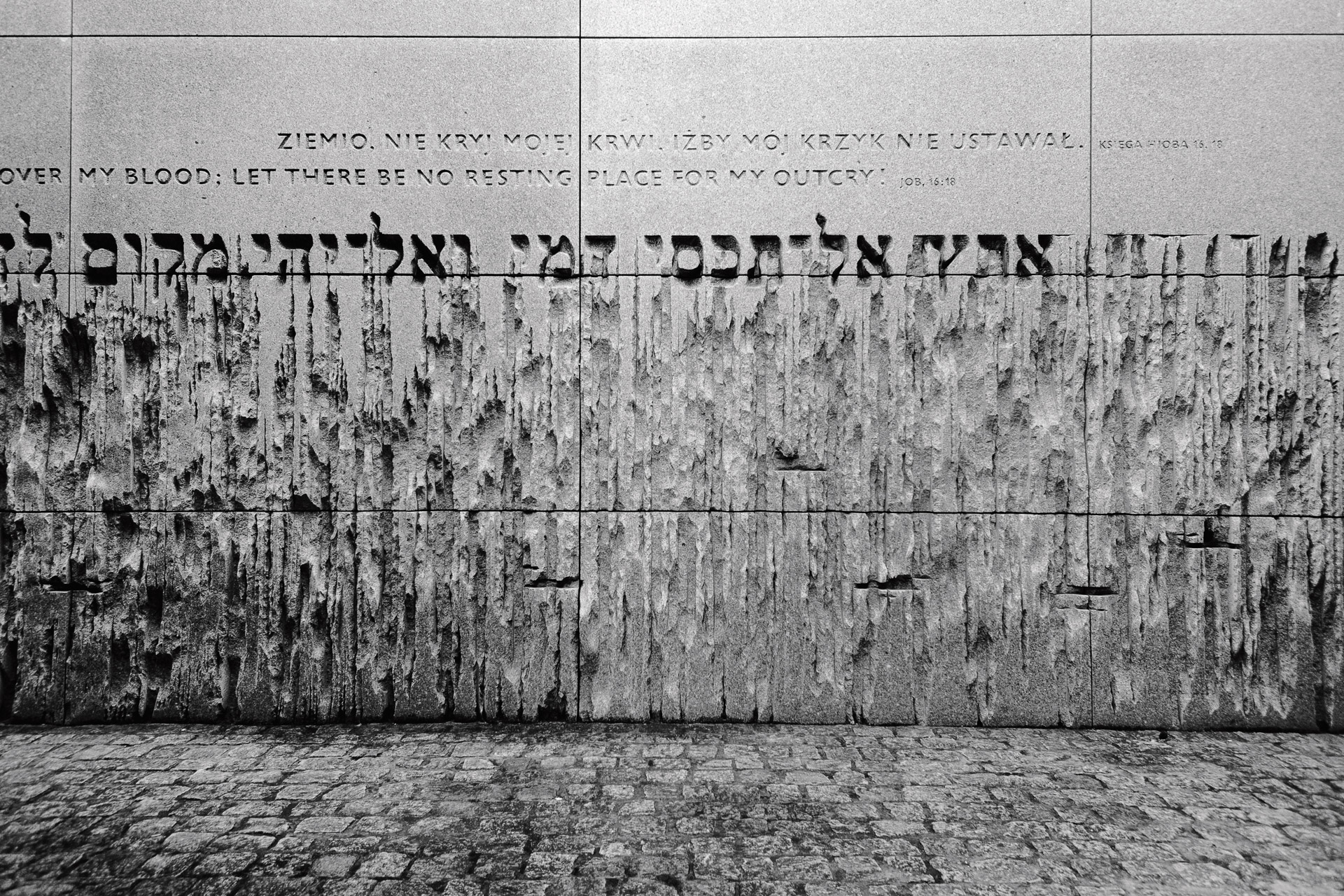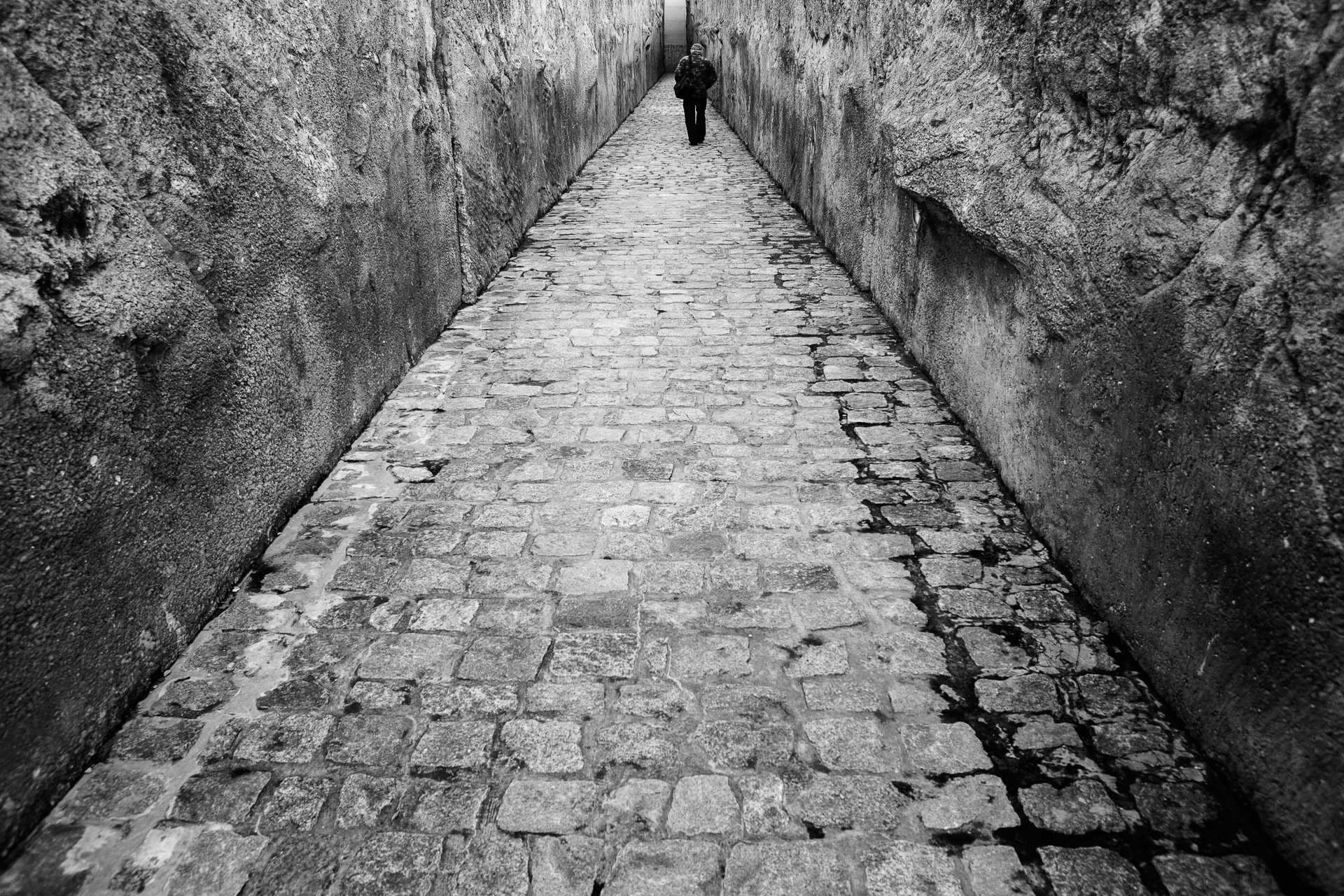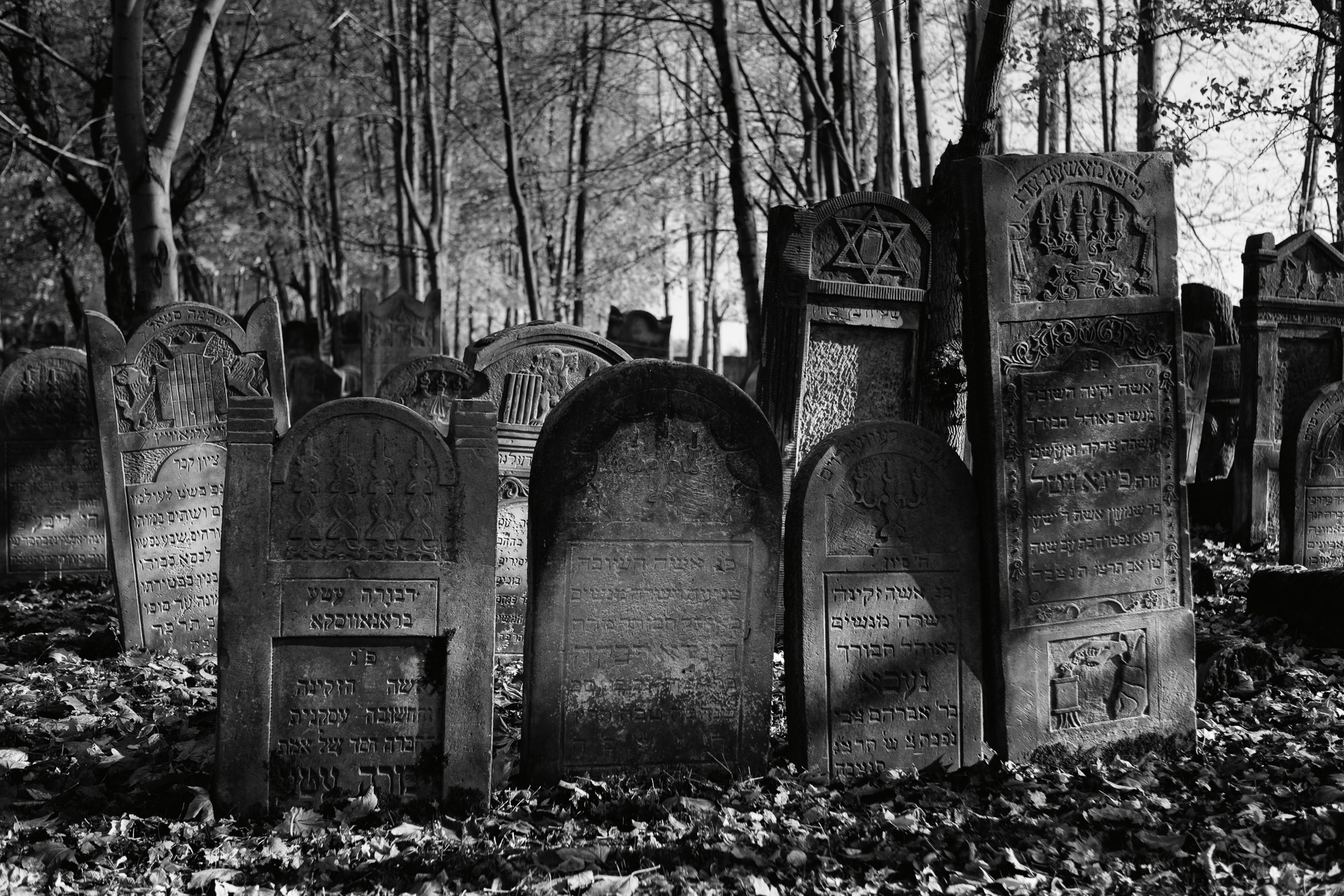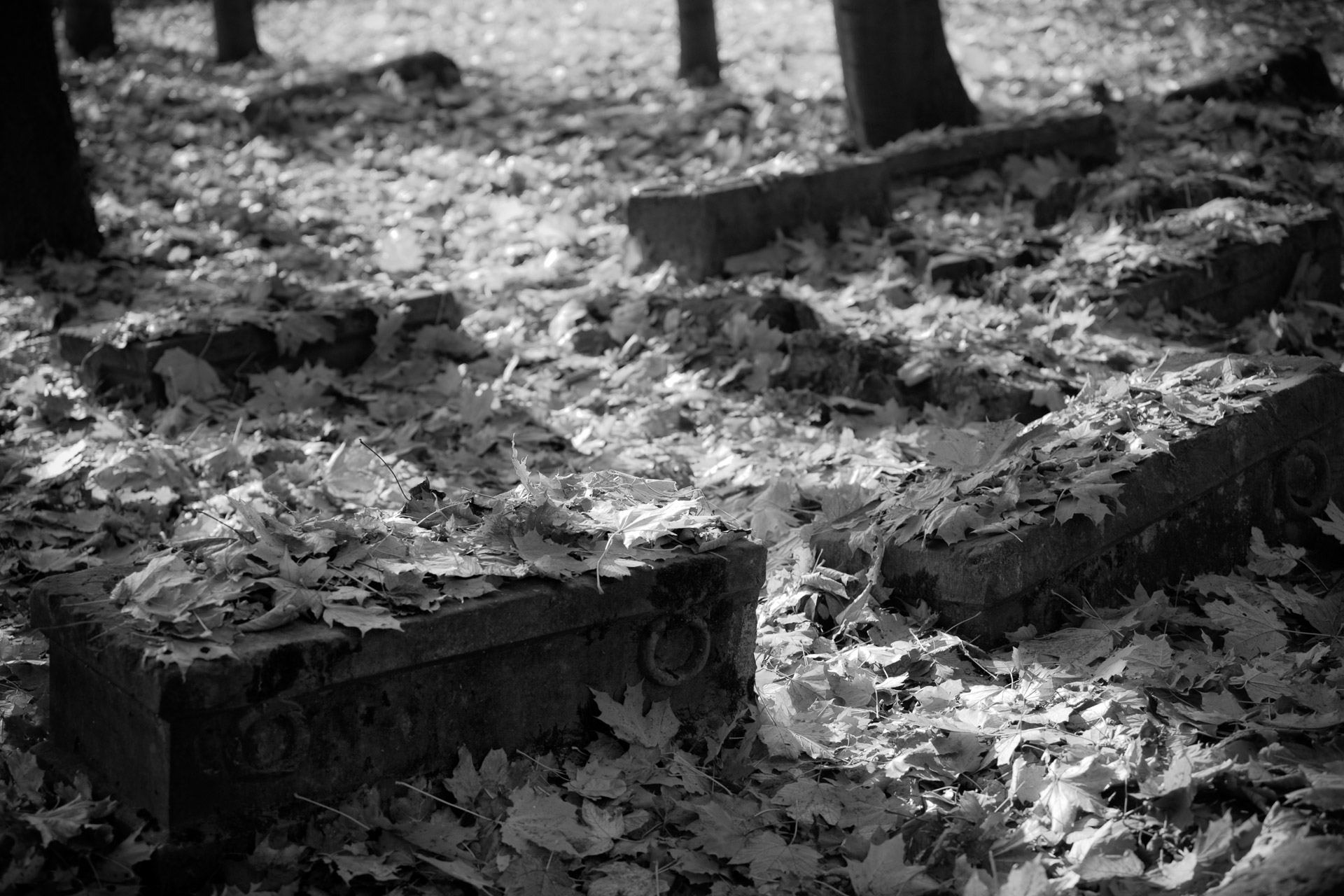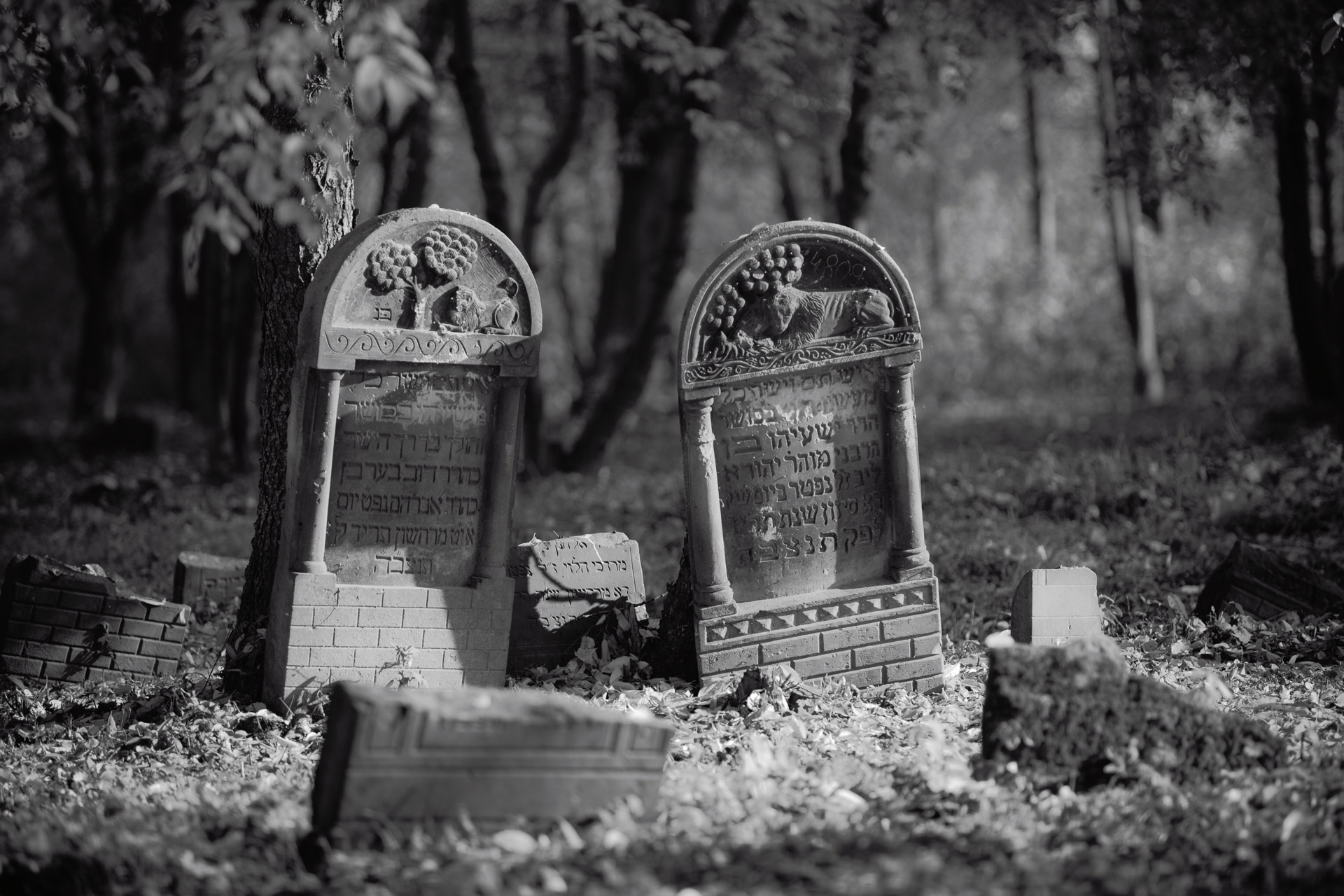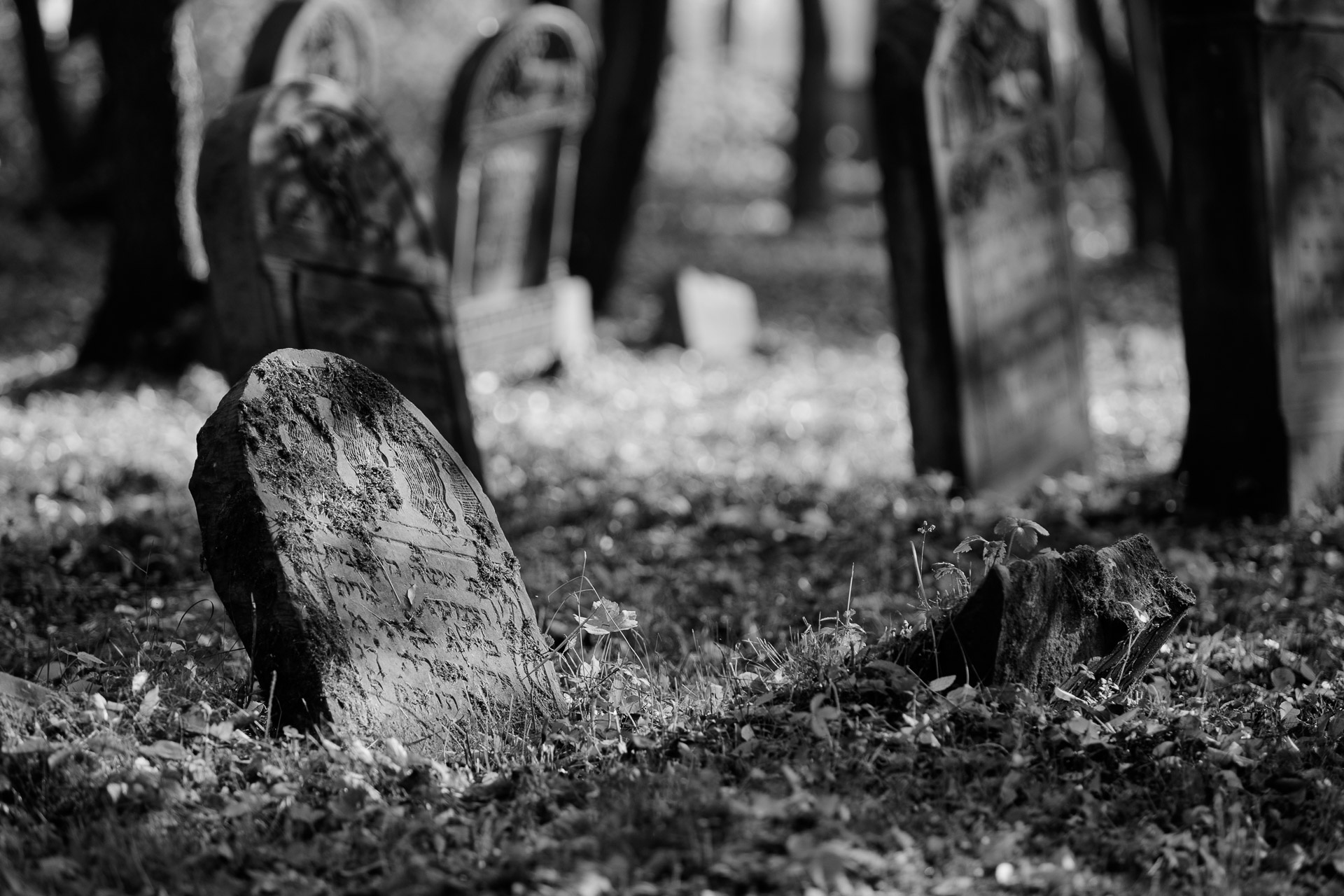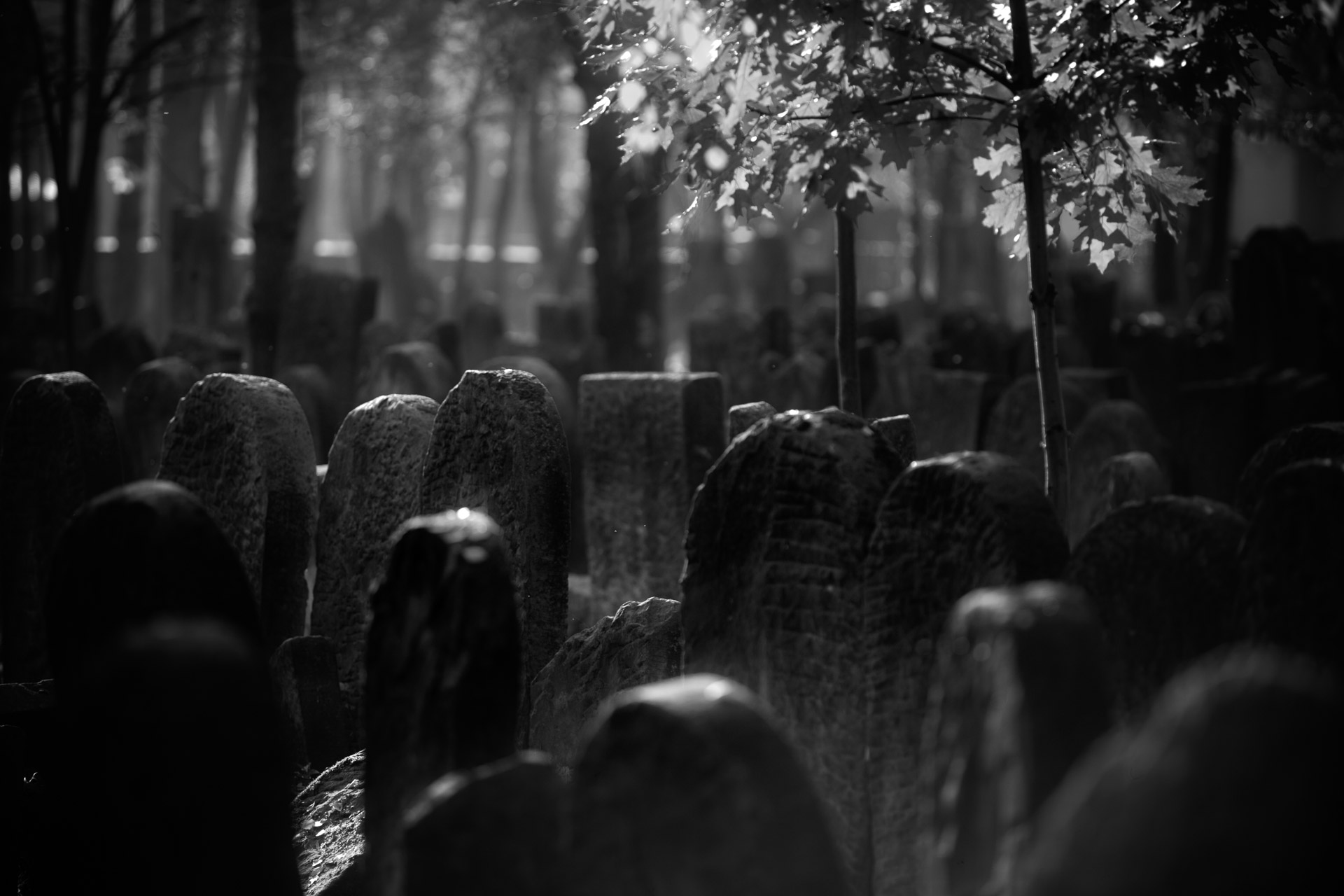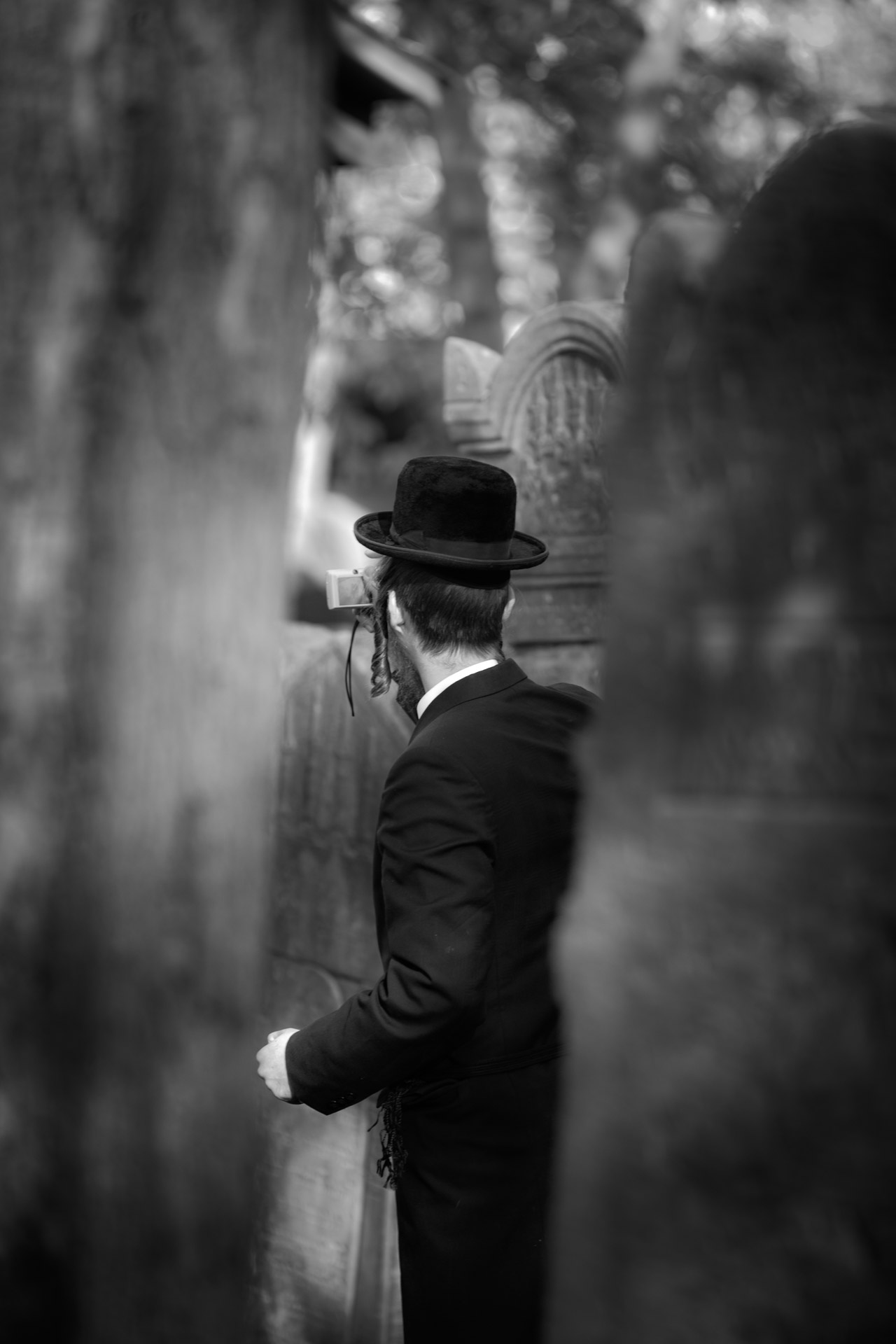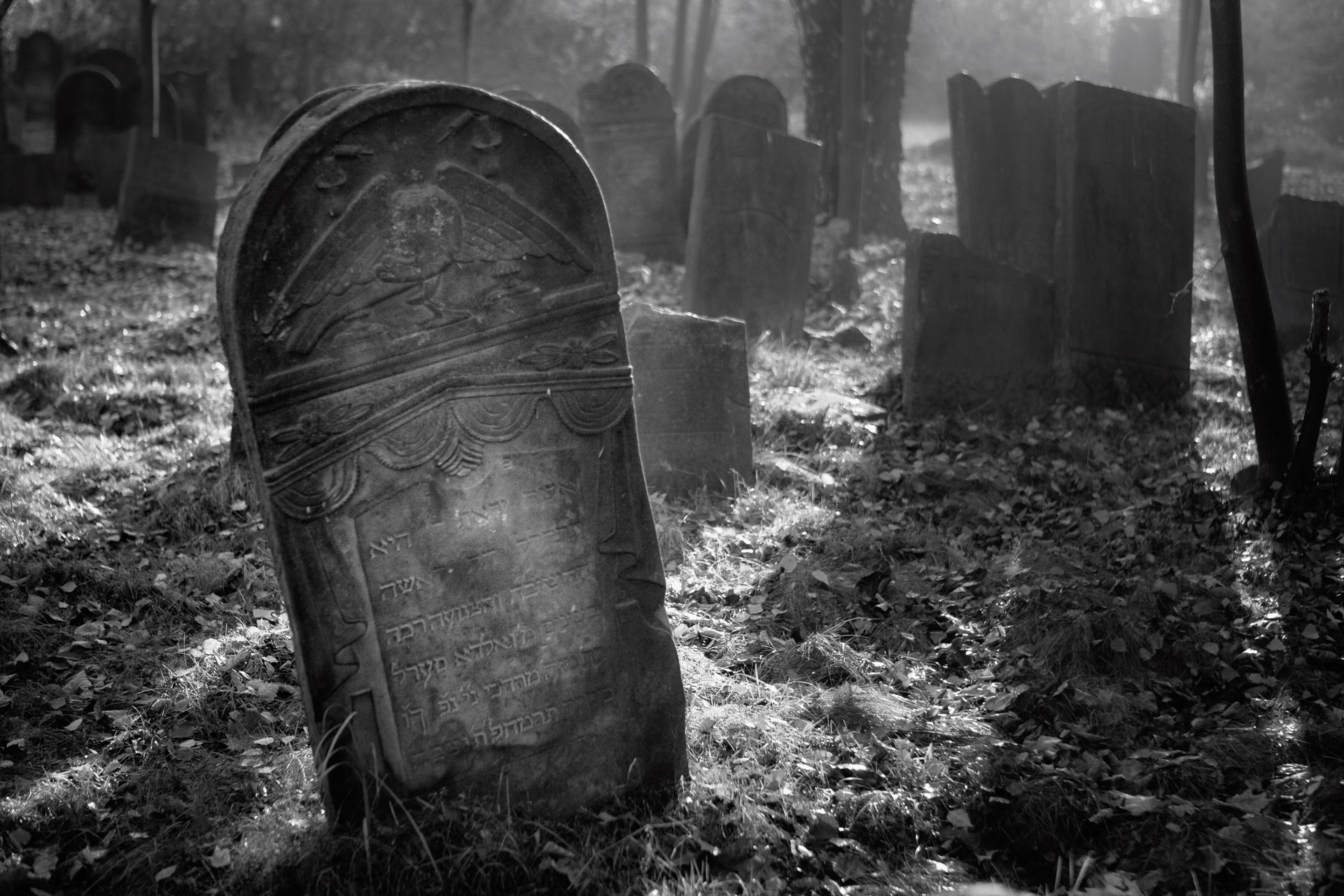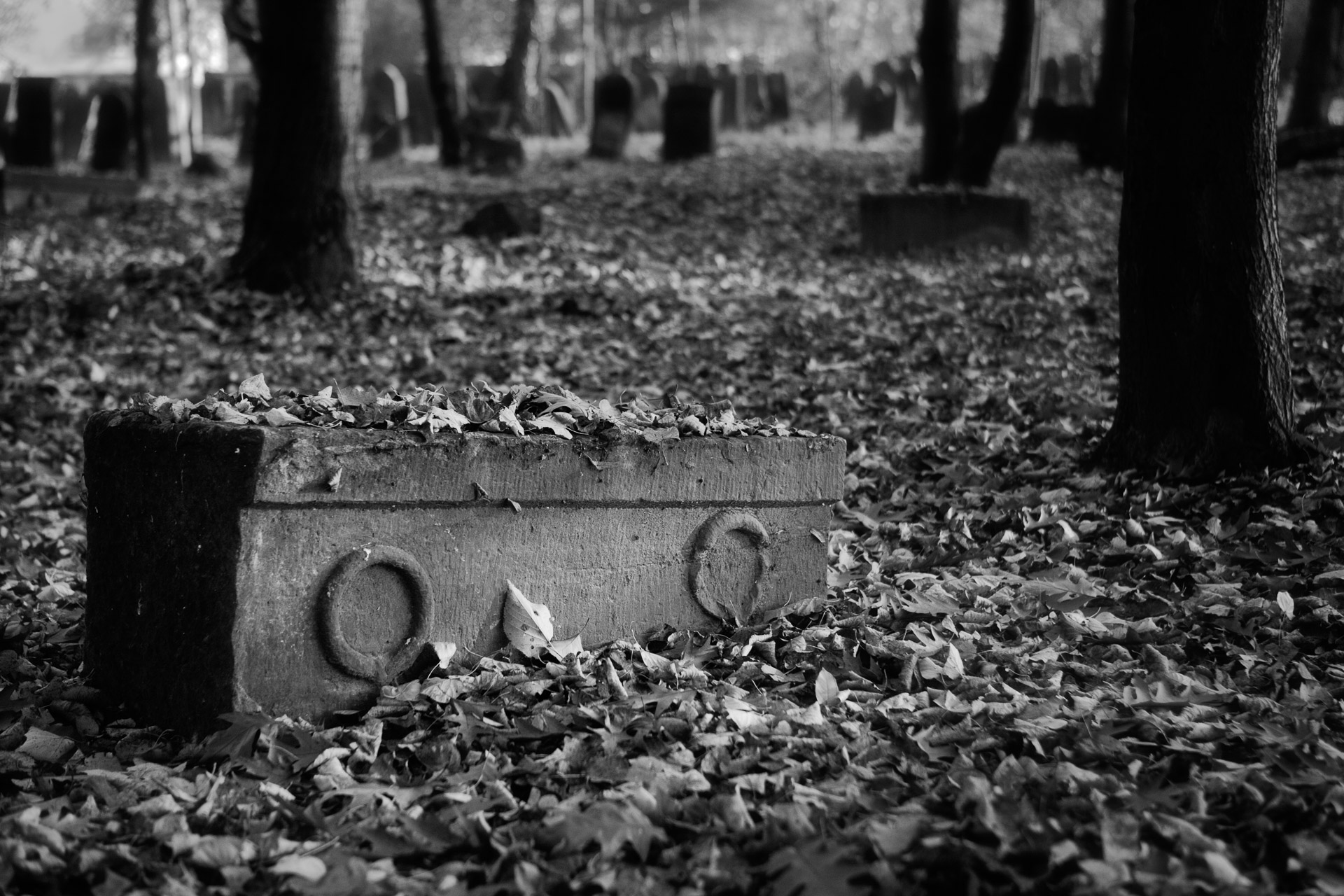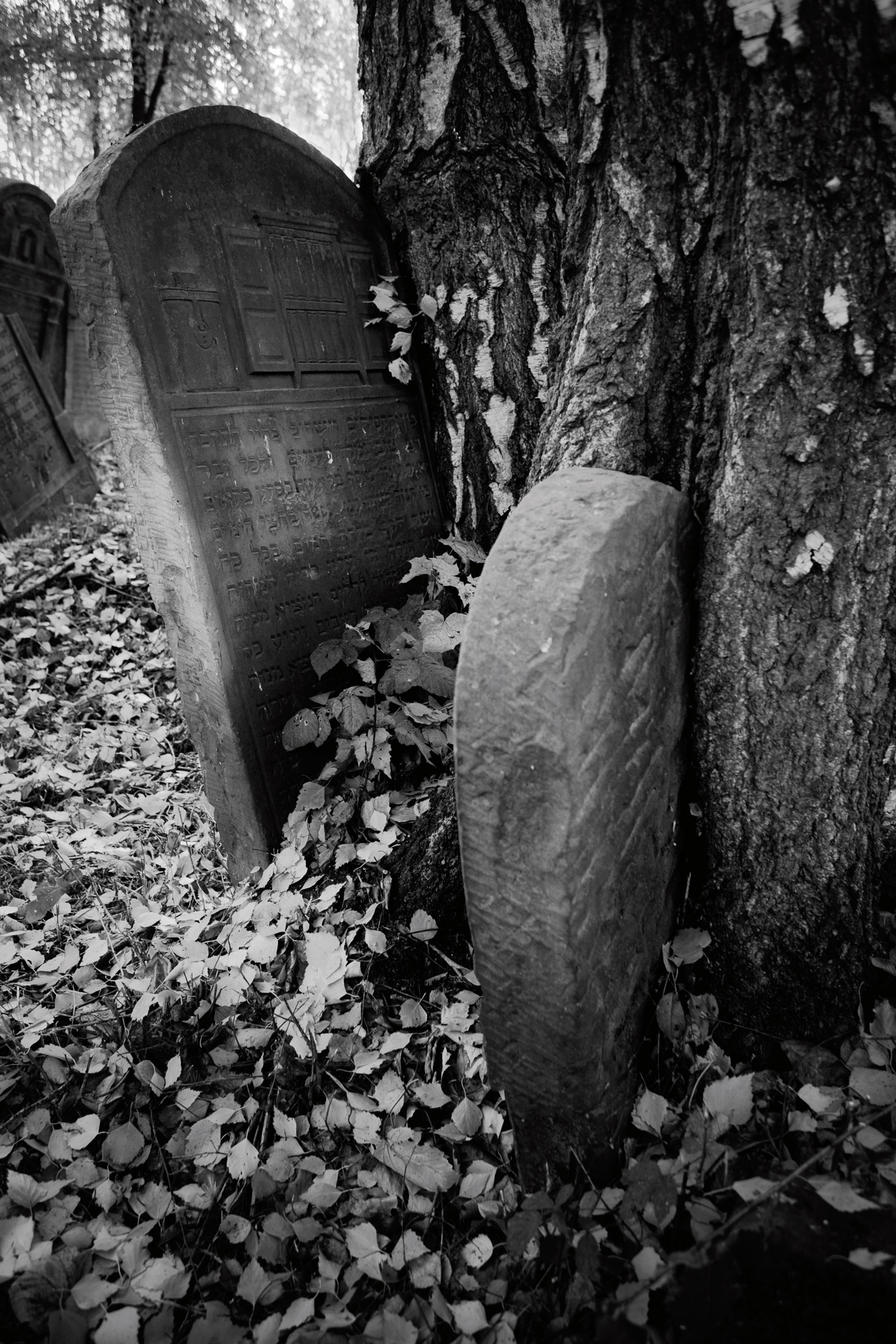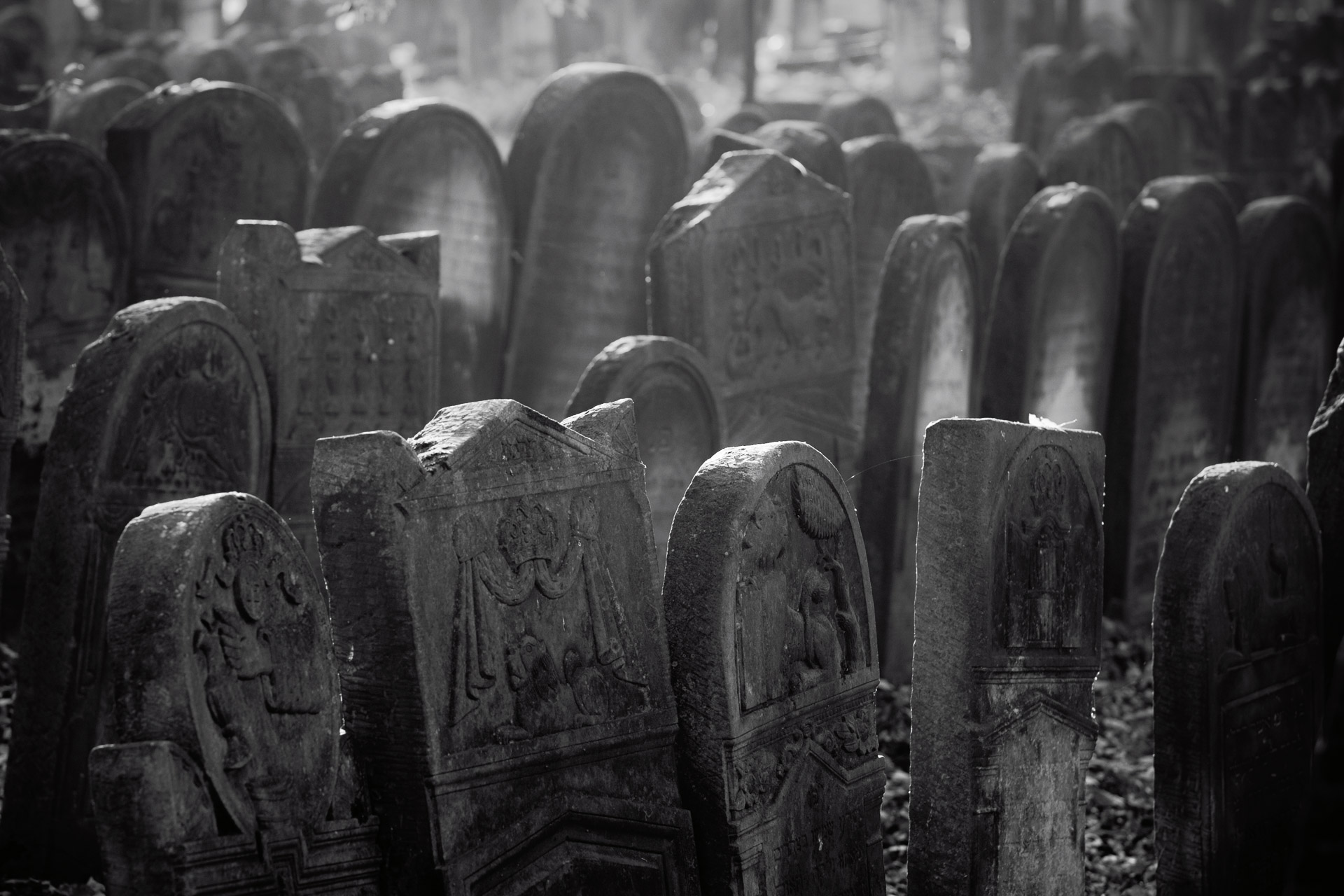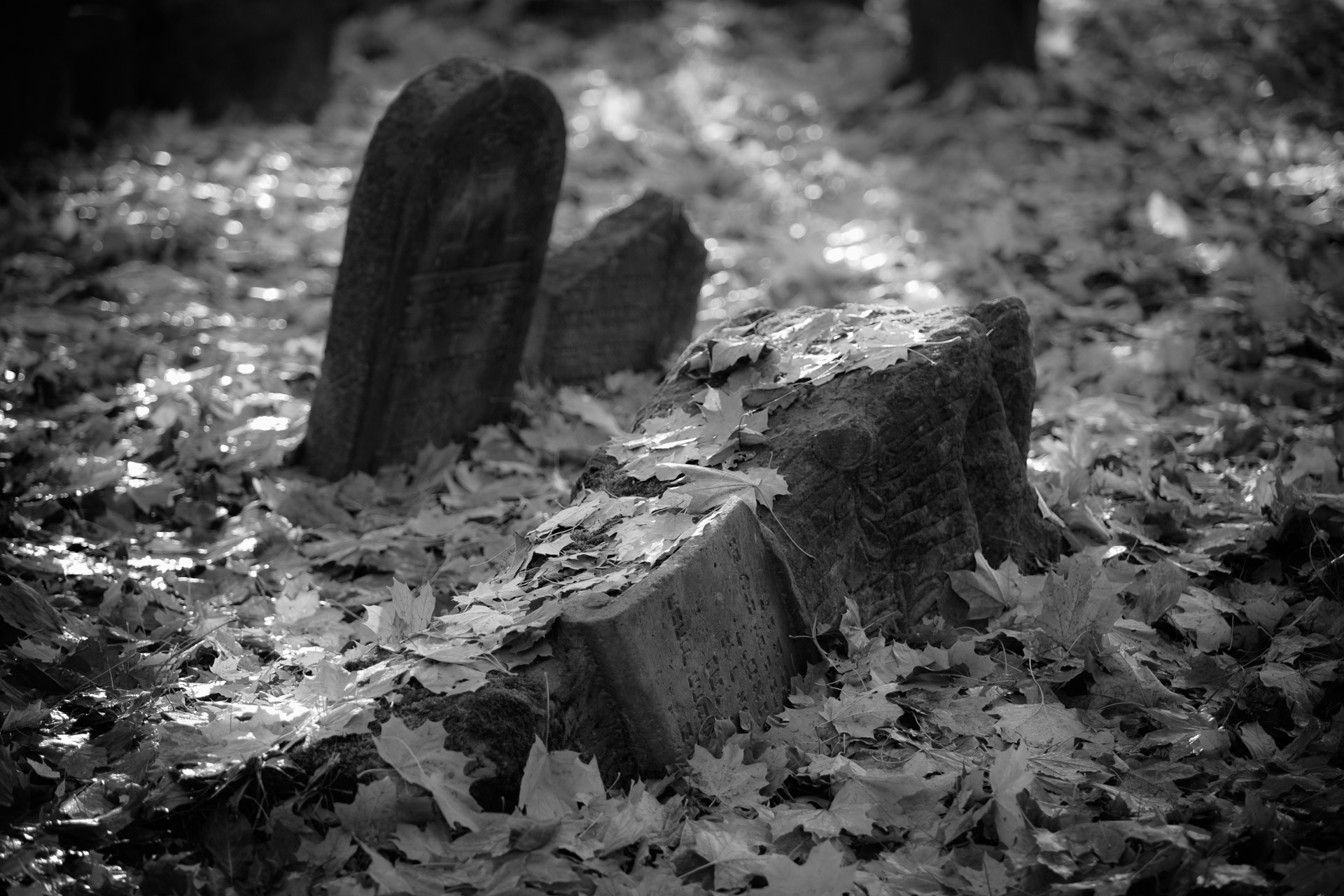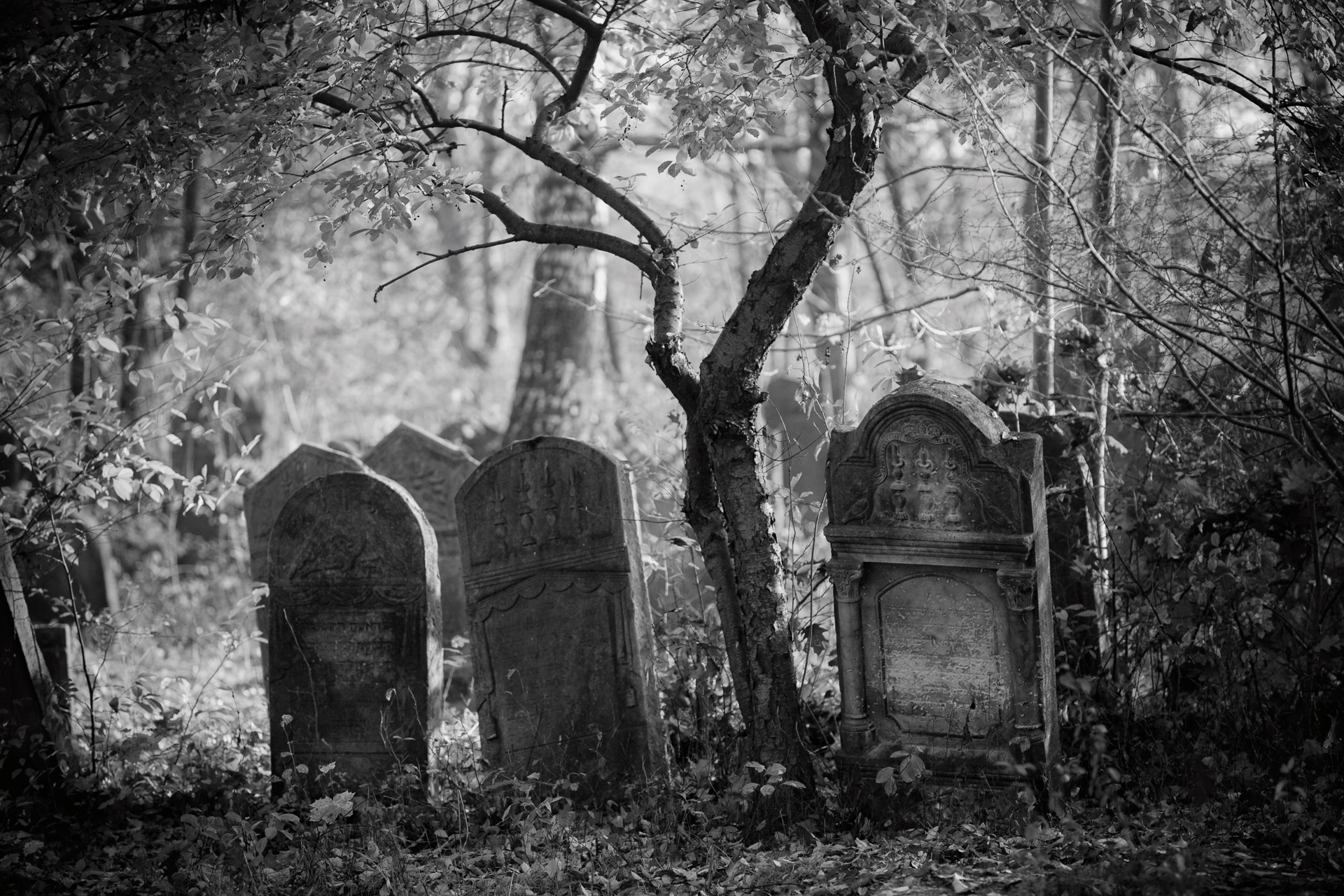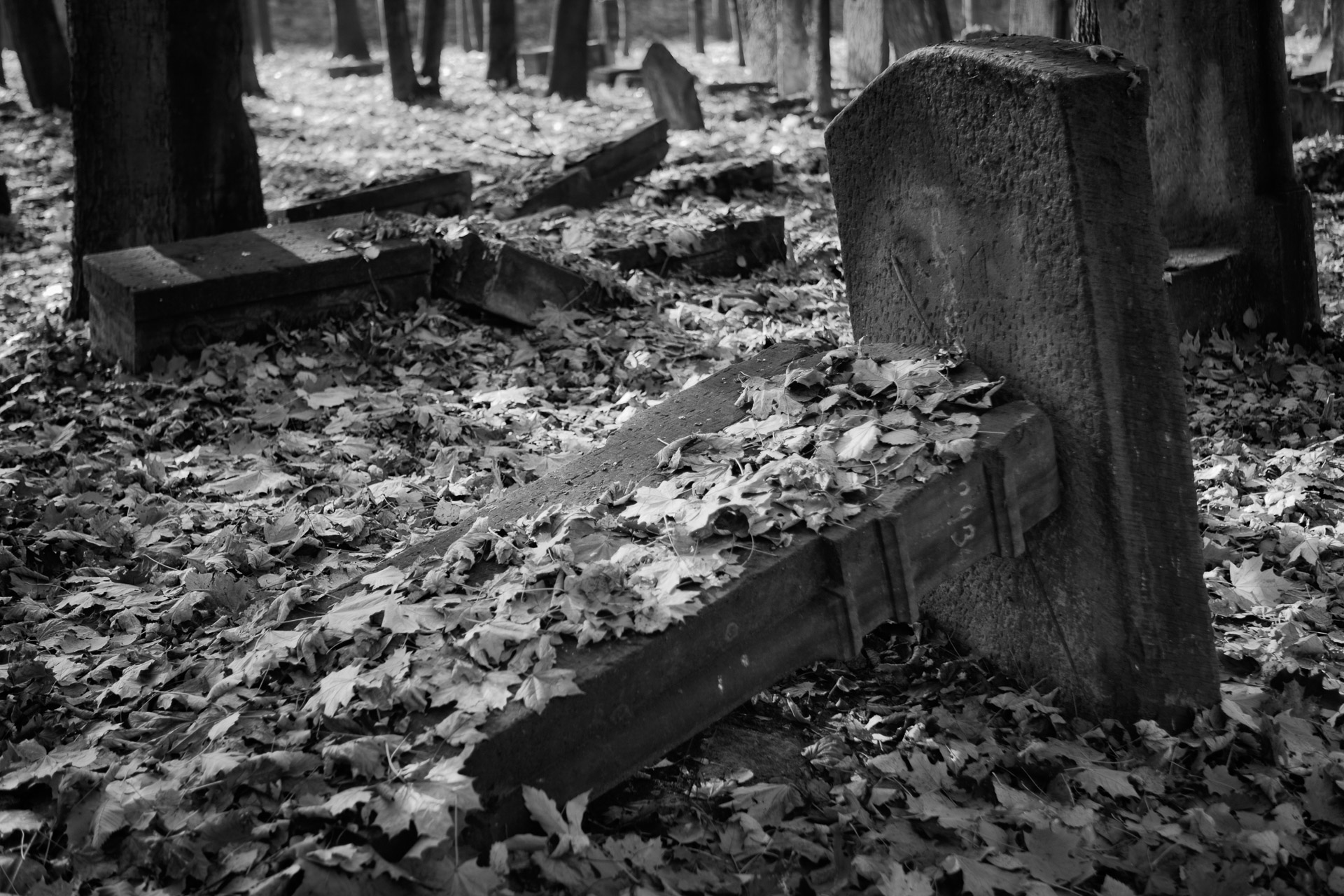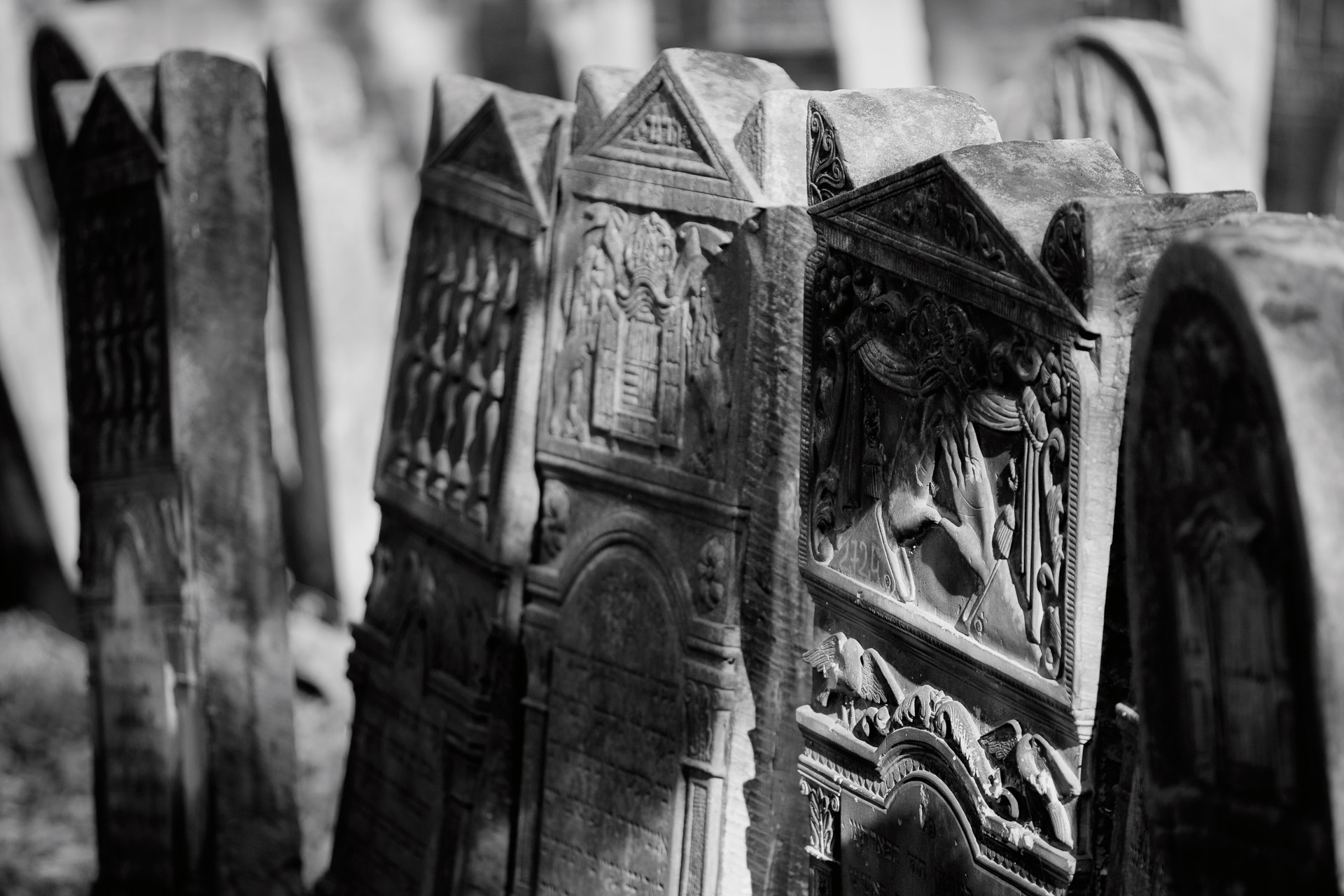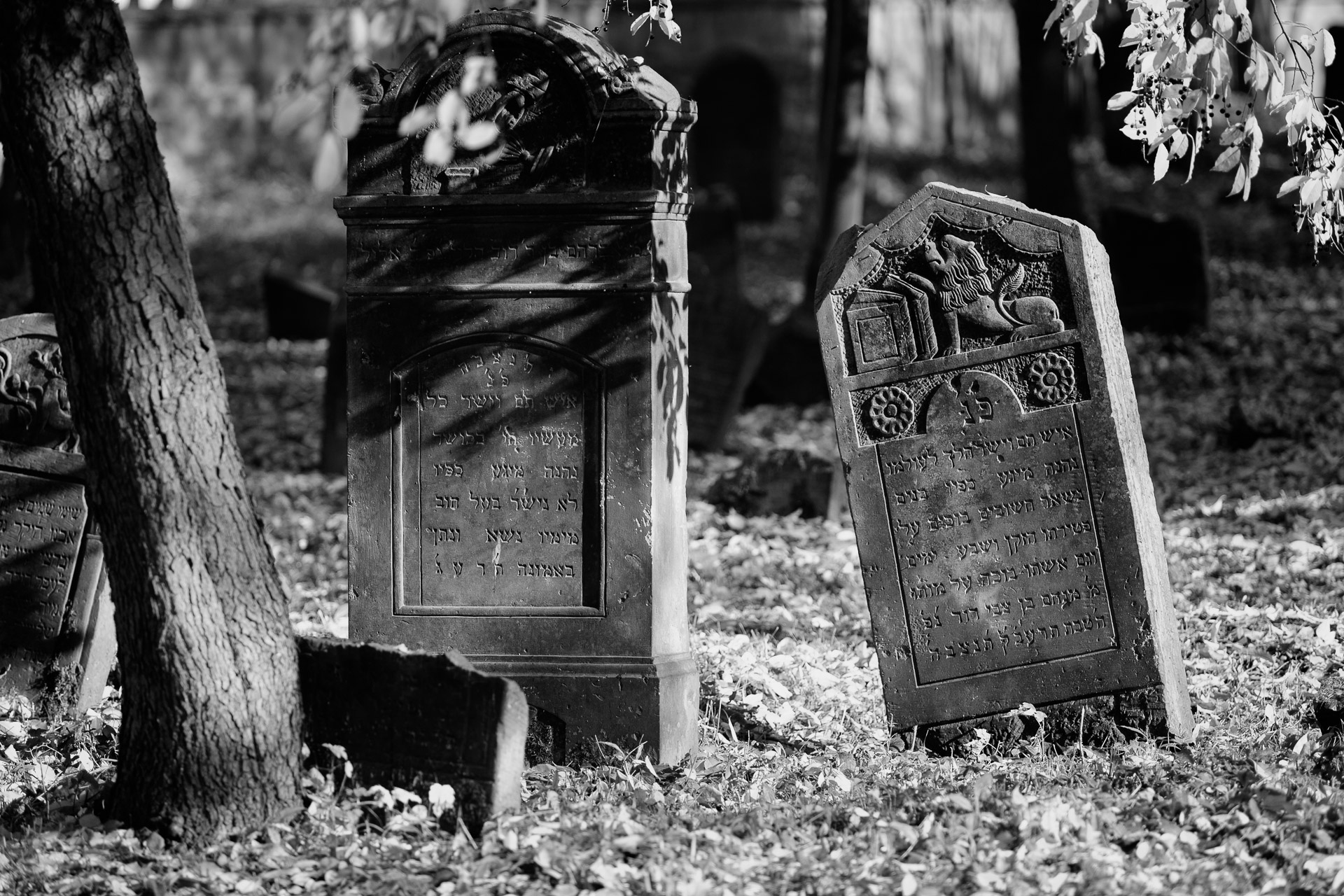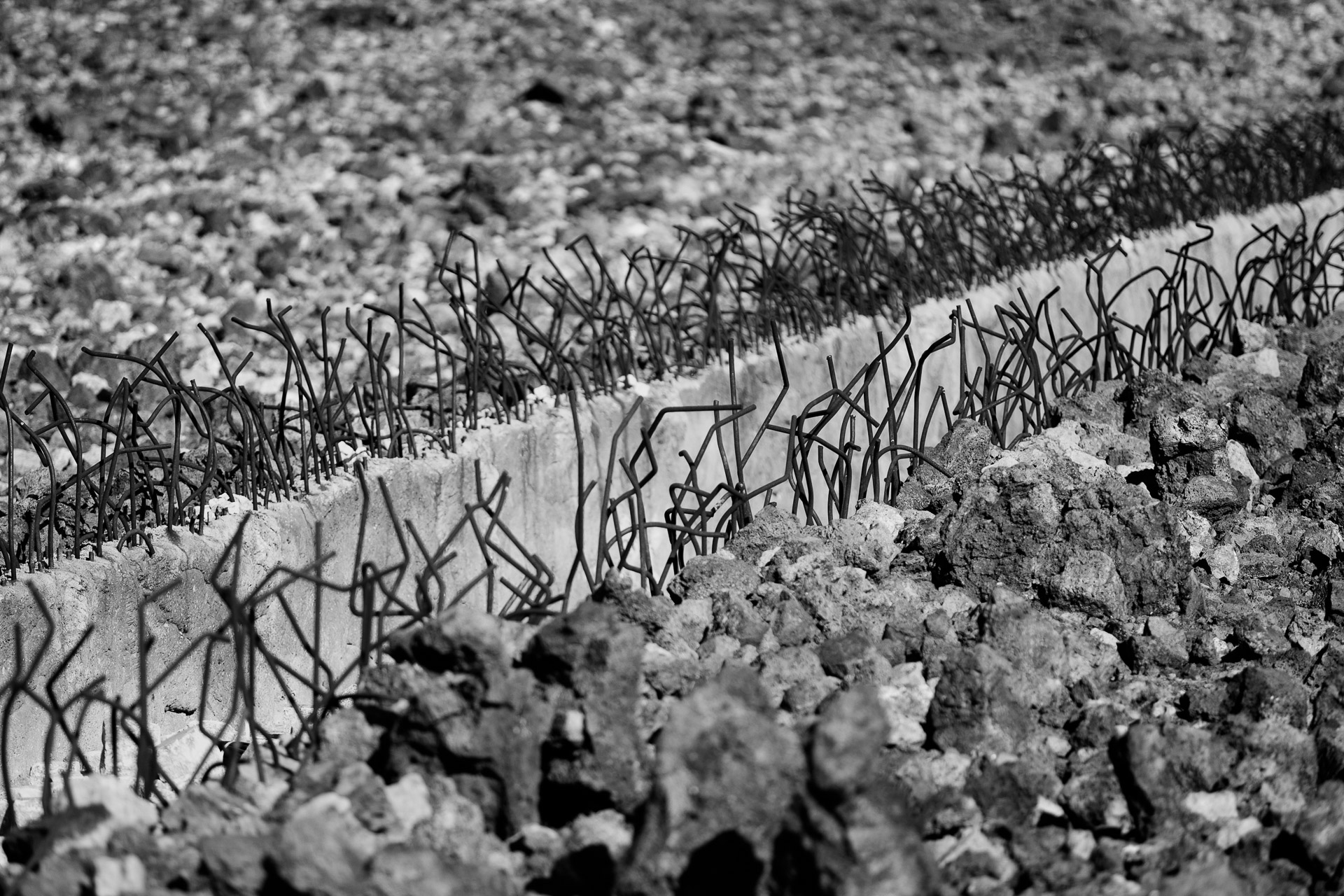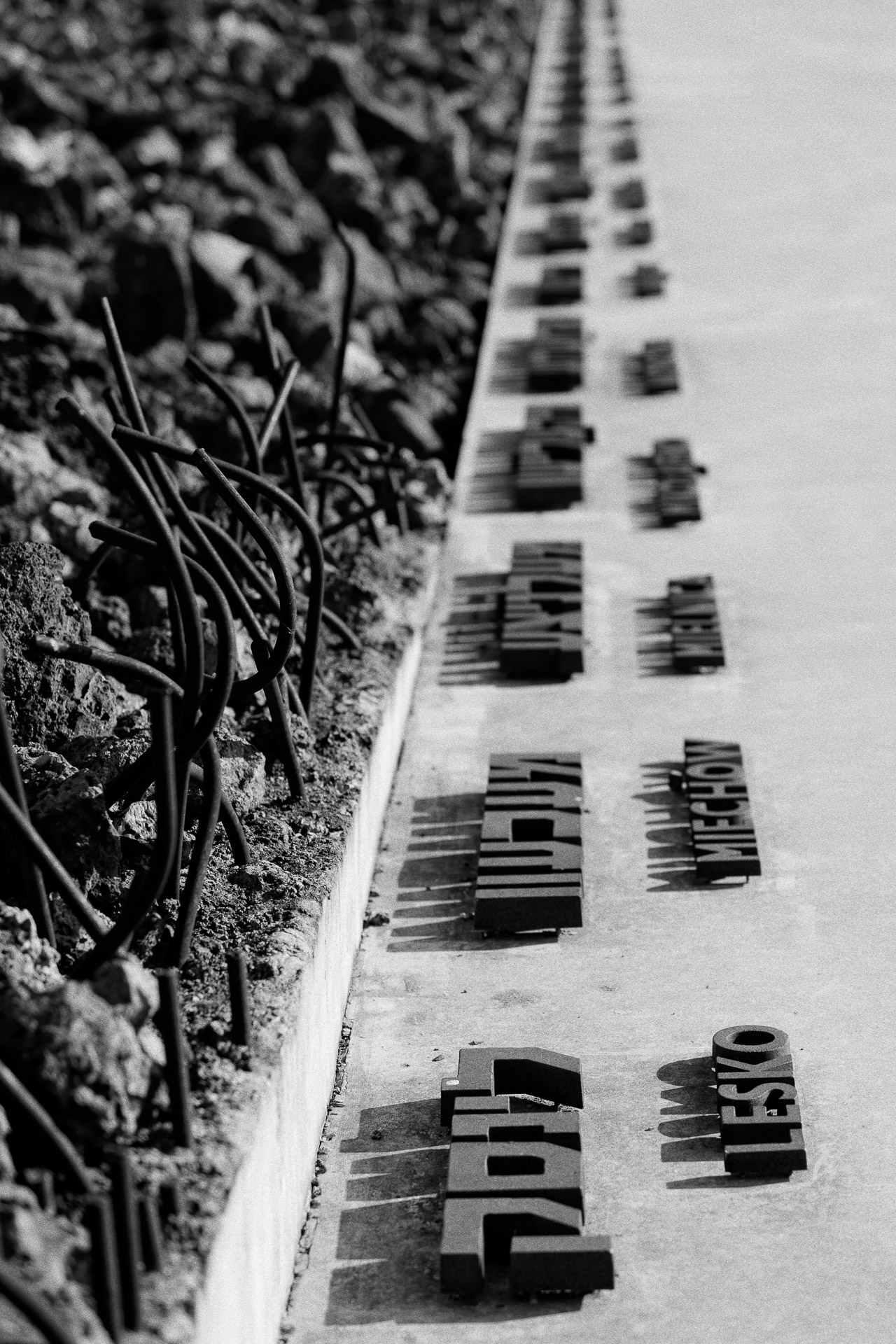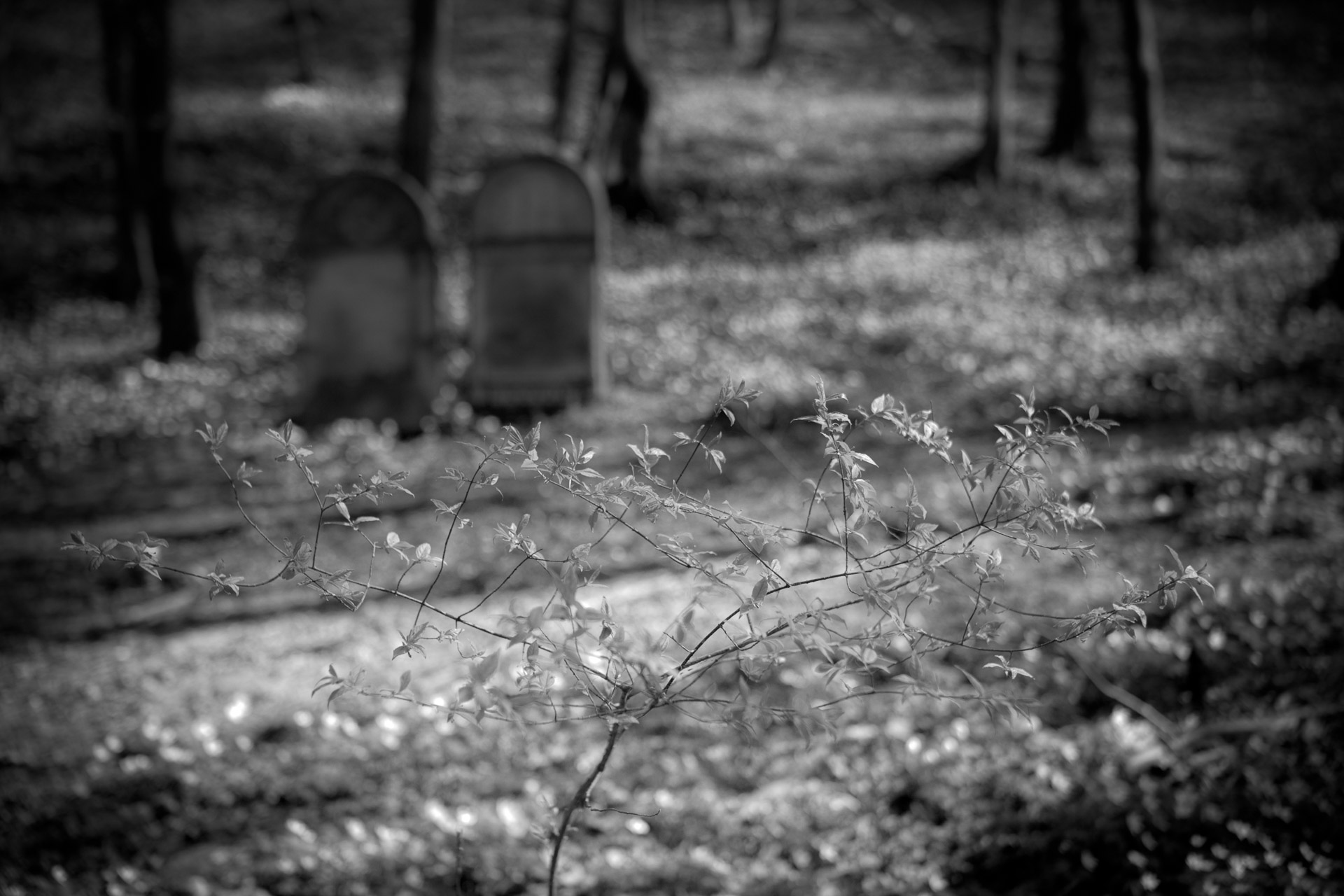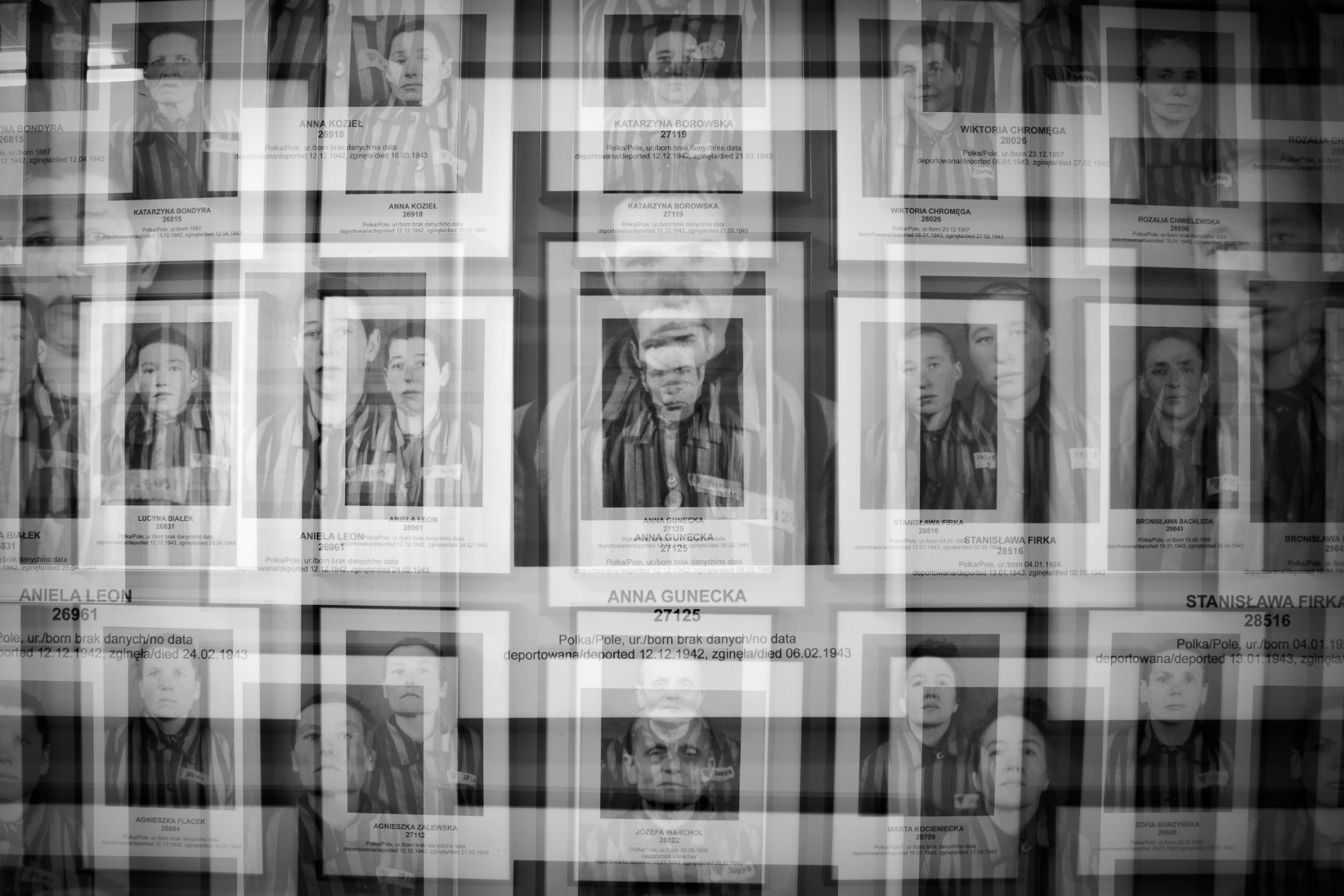TESTIMONY
The exhibition has been commented:
“The exhibition of Tomasz Grzyb’s photographs – ‘Testimony’ was viewed with dignity and in focus. It’s a story of people, death, and burial portrayed through symbols. The exhibition concludes with a monument of the Holocaust victims in the center of Berlin. Each photograph has artistic value and forms a document of a bygone era, showing that Jews lived and accounted for a significant percentage of our society in Poland.”
“The series of black and white photographs related to the life of Jews in Poland captures the death of Polish Jews in three phases: pre-war, wartime, and post-war. Therefore, from the photograph of the Jewish cemetery in Szydłowiec, Grzyb traces the path of the mass annihilation of the Jewish people during World War II. By picturing the death camps in Bełżec and Majdanek as a testimony to the massacre and martyrdom of Jews, Tomasz Grzyb then moves on to photograph the large concrete Holocaust memorial in Berlin. ‘Today, children play around it, adults relax,’ said the photographer. ‘Will World War II fade into history? Will we all forget it soon?… That’s why we have to speak about it, remind ourselves so that its crimes won’t happen again.”
“Interested in Jewish topic, the author has completed another series in his work, this time thematically related to the presence of Jews in Poland. The traces of numerous back-then social group, with its own identity and rich culture, are presented in various formally and temporally diverse burial places. He wanted to testify to the chosen people’s past and tragedy in a personal way. He presents the viewer with three stages of encounters with the theme of death in three different dimensions of time: pre-war, wartime, and post-war. It is a short but eloquent history of people presented in symbols. Hands folded in a gesture of blessing, reminding of prayer, concentration camp barbed wires, and massive concrete blocks on the streets and in empty spaces – they say much. They remind some, teach others, and do not allow others to forget.”
Resursa Obywatelska
Graveyards are unique, sacred places, regardless of faith and religion. They undoubtedly serve as remarkable proof of people and time, forcing us to pause, reflect, and reflect on often-forgotten history, hiding the secrets of human life. Like no other, they speak of passing, continuity of generations, and often… of tragedy. That is precisely what the exhibition of Tomasz Grzyb’s black and white, meaningful content photographs narrates. Interested in Jewish topics, the author has completed another series in his work, this time related to the presence of Jews in Poland. He has portrayed the traces of numerous back-then social group, with its own identity and rich culture, in various formally and temporally diverse burial places. He wanted to testify to the chosen people’s past and tragedy in a personal way. He presents the viewer with three stages of encounters with the theme of death in three different dimensions of time: pre-war, wartime, and post-war. His photographic reflections began with Szydłowiec, a place close to us, presenting the historic Jewish graveyard in various aspects. Following the traces of the mass extermination of Jews, he introduced parts of Majdanek and Bełżec, recording their shameful memorials of slaughter and martyrdom. This cycle concluded in Berlin, where the concrete Holocaust memorial stands in the city center, like a picture of remorse. Consciously and thoughtfully, Tomasz Grzyb highlighted the formal differences in death and burial. He distinguished the historic, weathered gravestones, visually referring to gates, symbolizing natural gateway from earthly life to somewhere beyond with another death, stripped of dignity, mass and impossible to understand. He contrasted the rich ornamentation of Szydłowiec’s graves with the dehumanized, minimalist memorials of destruction created contemporarily to commemorate mass murders. Through geometrizing their shapes, he introduced an atmosphere of cold order and anonymity. Only the piles of stones portrayed by the author, deeply rooted in Jewish tradition as a memory of the deceased, remember history and refer to a dignified death.
Fotoklub RP Region Radomski
